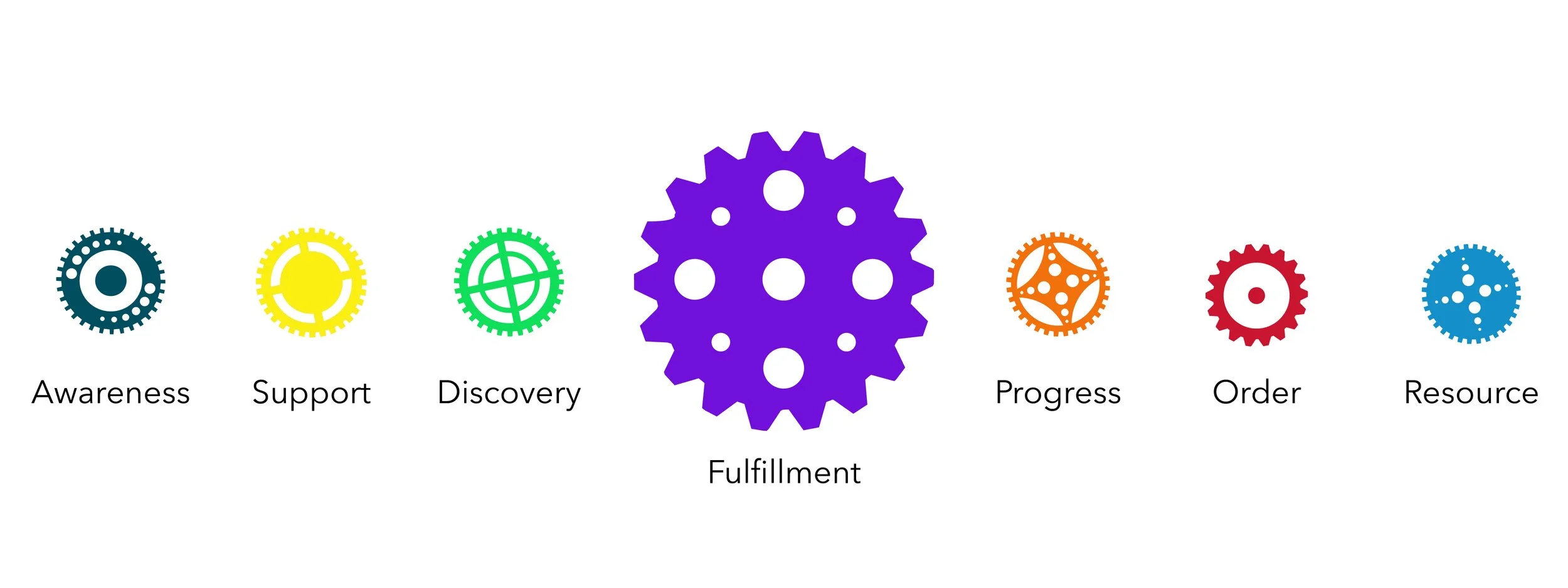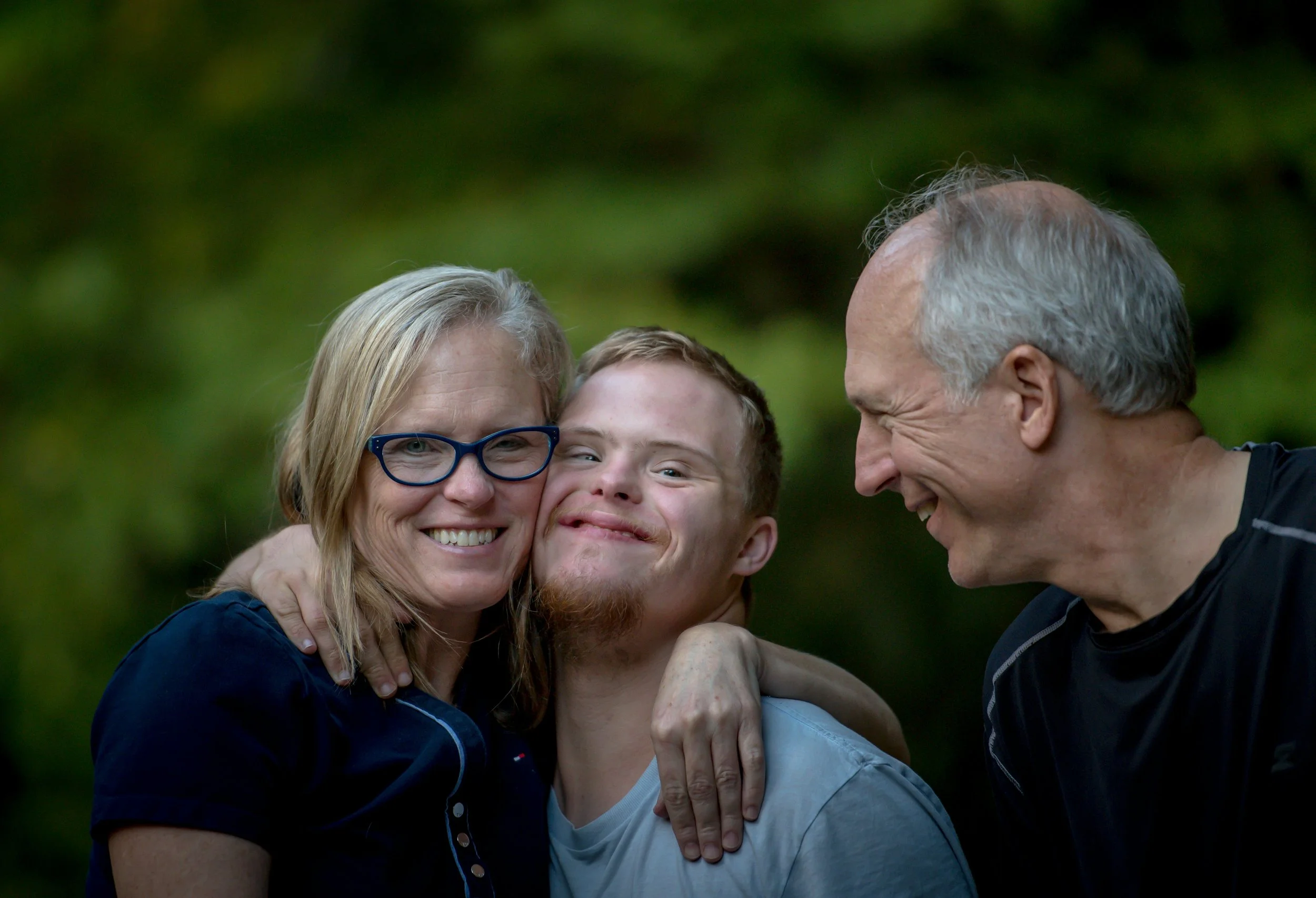Summary of Traits
READ ALONG | JUST LISTEN
SNAPSHOT
You are characterized by your love of experiences, hands-on learning, and ability to live in the moment while adapting to what life brings. You thrive on engaging directly with the world around you, drawing lessons and insights from real-life interactions and events. Your dynamic and adventurous nature allows you to navigate challenges creatively, making you highly resourceful and adaptable. Below is an extensive profile of your experiential design, highlighting your core characteristics, strengths, potential pitfalls, and strategies to optimize your abilities in both personal and professional endeavors.
BREAKDOWN
click + expand
-
You are guided by a deep curiosity about the world, seeking to understand new cultures, perspectives, environments, and ideas through personal exploration. This curiosity inspires you to step outside your comfort zone to expand your knowledge and understanding. Your inquisitive nature fuels a lifelong passion for discovery, making each new experience an opportunity to learn and grow.
-
You believe that real learning and growth come from doing. As an action-oriented person, you prefer diving into situations headfirst, trusting that you will learn along the way rather than waiting until everything feels prepared. Your drive to act quickly means you often excel in fast-paced environments where adaptability and quick thinking are essential.
-
Thriving on adventure and challenges, you are energized by exploring new places, trying unfamiliar activities, and taking career risks. Your spontaneity often leads you to take the road less traveled, enjoying the thrill of discovery. This adventurous spirit keeps you open to life’s surprises, embracing uncertainty as a chance to uncover hidden opportunities.
-
You are highly attuned to your senses and emotions, experiencing life vividly through taste, touch, sound, and sight. You seek immersive experiences that allow you to fully live in the moment, with emotional intensity adding depth to how you process experiences. This sensory engagement allows you to connect deeply with your environment, making each experience feel rich and memorable.
-
You are a hands-on learner, understanding life best through direct participation. Personal mistakes and triumphs shape your growth, and you believe the most valuable lessons come from real-world encounters. This practical approach gives you unique insights that cannot be taught in traditional settings, equipping you with valuable, lived wisdom.
-
Your pursuit of new experiences makes you highly adaptable and comfortable with change. You can pivot when needed and are resilient in the face of setbacks, allowing you to make the most of any situation. This resilience enables you to embrace challenges with confidence, knowing that you can handle whatever comes your way.
-
While you love learning and growth, you also prioritize meaningful connections with others through shared experiences. You value the relationships formed through mutual engagement, whether in collaboration, mentorship, or personal connection. By building these deep, authentic bonds, you create a network of support that enhances both your life and the lives of others.
-
Your positive outlook focuses on possibilities rather than limitations. You are future-oriented, always looking forward to the next adventure or opportunity, and approach new experiences with excitement and enthusiasm. This optimism keeps you motivated and engaged, empowering you to tackle challenges with a sense of excitement for what lies ahead.

READ ALONG | JUST LISTEN
Your path to success is rooted in experiencing life deeply and authentically. Rather than following rigid plans, you navigate your journey by exploring what feels right and brings you the most joy. Your process involves tuning into your desires, embracing new opportunities, and allowing experiences to unfold naturally. You succeed when you follow your passions, create memories, and share that sense of fulfillment with others, knowing that your path is defined not by strict goals but by the richness of the journey itself.
Your path to success is guided by your desire to learn through doing and experience life directly. You thrive in dynamic environments where you can explore, experiment, and adapt on the go. Success, for you, is not just about reaching a specific goal, but about the personal growth and insights you gain along the way. You believe that the best way to succeed is to immerse yourself fully in the process, remaining open to change and new discoveries. Your hands-on approach allows you to find solutions in real-time and adapt to challenges creatively, making your path to success unique and flexible.
Rather than relying on strict plans, you prefer to stay open to new possibilities and adjust as circumstances evolve. You define success by the depth of your experiences and the lessons you learn from them. For you, it’s about constantly pushing boundaries and discovering new ways of approaching challenges. You measure success by the richness of what you’ve experienced and how it has shaped your understanding. Your ability to embrace the unexpected and turn it into an opportunity is what sets you apart, making your path to success exploratory, adaptive, and deeply personal.
Your Plan + Process
As someone with an Experiential design, your path to success revolves around hands-on learning, exploration, and living in the moment. You thrive on direct experience, preferring to learn by doing rather than planning extensively. Your process is about discovering new insights and possibilities as you engage with the world around you. You have a natural inclination toward adventure, and you excel when you can experiment, adapt, and react to changing circumstances. You define success by what you gain from experiences, rather than strictly by traditional measures of achievement.
click + expand
-
Your natural plan doesn’t involve rigid structure but instead embraces spontaneity and flexibility. You are most comfortable when you can adapt on the go, adjusting your approach as new insights and experiences emerge. You prefer to keep your options open and explore different paths as they unfold, allowing for creativity and discovery.
Example: When organizing a project or trip, you leave room for improvisation, enjoying the flexibility to explore new opportunities that arise, rather than sticking to a strict itinerary.
-
Rather than following a pre-defined plan, you prefer to dive in and make decisions as the situation evolves. You focus on experiencing the process, learning from mistakes, and making adjustments in real-time. You value the lessons that come from being immersed in the task at hand and are open to changing direction when necessary.
Example: While working on a creative project, you start experimenting with different techniques, discovering what works as you go along, and pivoting based on what feels most effective in the moment.
-
Your perseverance comes from your enthusiasm for the journey rather than the destination. You don’t mind encountering obstacles as long as you can engage with new experiences and learn along the way. You push forward with curiosity and excitement, knowing that each step brings you closer to understanding or mastery.
Example: During a challenging project, such as learning a new skill, you keep experimenting and trying different approaches until you find the one that clicks, all the while enjoying the process of exploration.
-
When problems arise, you solve them through adaptation and experimentation. You’re not tied to any particular method and are willing to try multiple solutions to see what works best. You trust your ability to find creative and unconventional ways to resolve issues.
Example: When faced with a technical issue during a presentation, you improvise by using alternative tools or changing the format on the spot, focusing on maintaining momentum rather than sticking to the original plan.
How You Define Success
Success, for an Experiential design, is defined by personal growth, enjoyment of the process, and the knowledge gained from engaging with life. You thrive when you are learning and evolving, and your idea of success is more about what you experience and learn rather than simply achieving a goal.
click + expand
-
While tangible results matter, you place more emphasis on the journey than the destination. Success, for you, comes from fully engaging with the process and learning from it. If the experience was meaningful and taught you something new, you consider it a success, regardless of the outcome.
Example: Completing a hands-on workshop and walking away with new skills, even if the final product isn’t perfect, is a form of success because of the growth and knowledge gained.
-
Success, for you, is less about stability and more about embracing the unpredictable. You take pride in being able to navigate the unknown and find order through personal experience and adaptability rather than rigid planning.
Example: You might thrive in a fast-paced environment where changes happen frequently, excelling at finding your footing in situations where others may feel overwhelmed by uncertainty.
-
You build success through your ability to adapt and respond to real-time circumstances. People trust you to handle change and approach challenges with creativity and an open mind. Your ability to go with the flow and still deliver results earns you a reputation for being dependable in dynamic settings.
Example: Your team trusts you to manage live events because they know you can handle unexpected issues on the spot, whether it’s a technical failure or a sudden change in the schedule.
-
For you, success is about leaving a legacy of memorable experiences and unique insights. You aim to create a lasting impact by inspiring others to embrace new experiences and think differently about the world, rather than simply focusing on material outcomes.
Example: Leading a team-building retreat that creates long-lasting bonds and instills a spirit of adventure and creativity in participants, leaving a positive influence on both their professional and personal lives.
How You Go About Being Successful
You go about achieving success by being open to new experiences, adapting to change, and embracing spontaneity. You trust that by engaging fully with each moment, you’ll discover the insights and growth needed to move forward.
click + expand
-
Though you may not follow traditional methods of organization, you succeed by staying flexible and prepared for the unexpected. Your ability to adapt quickly and make sense of chaos helps you thrive, even in unstructured environments.
Example: Instead of detailed lists and plans, you might use broad guidelines or frameworks that allow for improvisation, keeping yourself ready to pivot when new opportunities or challenges arise.
-
You define productivity differently than most—it's about learning through doing rather than checking tasks off a list. By diving into projects and experiences, you maintain momentum through your engagement with the process rather than the strict completion of tasks.
Example: On a creative project, you focus on experimenting and learning from trial and error, making continuous progress as you discover what works best in the moment.
-
When challenges arise, you solve problems through real-time experimentation. You don’t stick to conventional solutions, preferring instead to try different methods until you find what works. Your hands-on approach allows you to resolve issues creatively.
Example: When faced with a malfunctioning piece of equipment during an outdoor event, you quickly find a workaround, using available resources to keep things running smoothly without delay.
-
You build trust through your consistent ability to adapt and make things work in the moment. People know they can count on you to improvise, think on your feet, and turn challenging situations into opportunities for learning and growth.
Example: Your ability to handle a last-minute change during a live production, such as adjusting the script or improvising when a speaker doesn’t show up, earns you the trust of your team as a flexible and reliable problem-solver.
Challenges You Face
Your strengths in hands-on learning, adaptability, and dynamic problem-solving allow you to thrive in real-world situations. However, your preference for action and living in the moment can also introduce challenges in your pursuit of success. These challenges arise from your focus on immediate experiences and your tendency to rely on intuition and flexibility:
click + expand
-
You may struggle with repetitive tasks or structured routines, as you prefer engaging, hands-on experiences. This impatience can make it difficult to stick with long-term projects that lack variety or excitement.
-
Your focus on the present moment may cause you to overlook long-term goals or fail to plan for the future. This can lead to missed opportunities or a lack of direction in achieving broader ambitions.
-
You may prioritize engaging in new activities or projects, sometimes at the expense of focus or follow-through. This tendency can spread your energy too thin, making it hard to excel in a specific area.
-
While you excel in action and adaptability, you may resist taking time to reflect on your experiences. Without reflection, you might miss valuable lessons or repeat mistakes in similar situations.
-
Your natural curiosity and desire to explore can make it challenging to maintain focus on a single task or project. You might become easily distracted by new opportunities, pulling you away from your original objectives.
-
Your active, fast-paced approach can lead to burnout if you don’t balance your energy. Constantly seeking new experiences without rest can make it difficult to sustain long-term productivity and well-being.
-
You may prioritize the overall experience or outcome, occasionally neglecting smaller details that are essential to success. This can lead to errors or inefficiencies in your work.
To overcome these challenges, you can develop strategies that balance your dynamic, action-oriented nature with intentional planning and focus:
-Embrace Structure in Small Steps: Incorporate manageable routines or milestones into your projects to maintain momentum without feeling constrained.
-Set Long-Term Goals: Pair your love for the present moment with a clear vision for the future, breaking big ambitions into actionable steps.
-Prioritize Selectively: Choose the experiences or opportunities that align most with your goals to avoid spreading yourself too thin.
-Reflect Regularly: Take time to reflect on your experiences, identifying key takeaways and areas for improvement.
-Focus on One Thing at a Time: Practice maintaining attention on a single task or project before moving on to the next.
-Balance Activity with Rest: Schedule time to recharge, ensuring you can sustain your energy and creativity over the long term.
-Pay Attention to Details: Make a conscious effort to review and refine your work, ensuring quality alongside innovation.
By combining your strengths in adaptability and experiential learning with focus, planning, and reflection, you can achieve success in a way that feels dynamic, fulfilling, and aligned with your natural abilities.
Your Experiential design revolves around hands-on learning, flexibility, and adapting to the moment. You define success through personal growth, unique experiences, and gaining insights from engaging with the world around you. You go about success by embracing spontaneity, experimenting with different approaches, and staying open to change, but you may face challenges with long-term focus, burnout, and lack of structure. By balancing your enthusiasm for new experiences with more sustained efforts, you can continue to leverage your strengths in adaptability and real-time problem-solving to achieve lasting success.

READ ALONG | JUST LISTEN
Your pace is dynamic, flexible, and guided by the flow of the moment. You move through life at a rhythm that matches your current desires and emotional state, sometimes racing forward with excitement and at other times slowing down to relish the peaceful stillness. You thrive in environments where you can alternate between bursts of activity and moments of quiet reflection. Rest for you comes from indulging in experiences that renew your spirit—whether it’s through creativity, exploration, or simply enjoying the beauty of the world around you.
EXAMPLES
click + expand
-
Dynamic Pace: At times, they may work in intense, focused sprints, diving deeply into a project when inspiration strikes. This can lead to periods of high productivity and creativity, especially when they feel emotionally or intellectually connected to their work.
Slower Pace: Between these bursts, they might take frequent breaks to rest, reflect, or gain new insights. This could look like stepping away from the desk for a quick walk, daydreaming, or spending time on less demanding tasks to let ideas develop naturally.
-
Dynamic Pace: They might engage enthusiastically in social settings, enjoying meaningful conversations, laughing, and connecting deeply with others when the mood is right. This energetic socializing can be invigorating and fulfilling.
Slower Pace: After a period of high interaction, they might retreat for some quiet time to recharge, perhaps with a solo activity like reading, meditating, or relaxing in a quiet space. This variation helps them avoid burnout and stay centered.
-
Dynamic Pace: Some parts of the day, like mornings, might be filled with energetic activities, such as exercising, tackling important tasks, or running errands. When motivated, they often approach these tasks with enthusiasm, feeling the joy of progress and movement.
Slower Pace: Later, they might slow down intentionally, savoring small moments like preparing a meal, sitting outside, or enjoying a relaxing evening routine. This slower pace allows them to appreciate simple pleasures and tune into a sense of peace and satisfaction.
-
Dynamic Pace: For recreation, they might seek out activities that excite them—like dancing, exploring new places, or trying a new hobby—fully immersing themselves with a playful energy.
Slower Pace: They also balance this with calm, restorative hobbies, such as reading, painting, or watching a favorite show. These restful moments renew their spirit and help them reconnect with a sense of inner harmony, balancing out the high-energy pursuits.
-
Dynamic Pace: When they're excited to learn something new, they may dive in with passion, taking online courses, reading multiple articles, or experimenting with new skills. This burst of engagement lets them absorb a lot in a short time, driven by curiosity and the joy of discovery.
Slower Pace: At other times, they might ease back to reflect on what they’ve learned, journaling about new insights, applying knowledge gradually, or simply taking time to appreciate the progress they’ve made. This slower pace allows them to integrate their learning meaningfully, making personal growth a deeply fulfilling journey rather than a race.
-
Dynamic Pace: In some moments, they might engage actively in wellness routines, like intense workouts, focused goal-setting, or organizing their environment to feel fresh and inspired. These dynamic self-care activities boost their energy and create a sense of accomplishment.
Slower Pace: Alternately, they may embrace gentler, more meditative self-care practices, such as taking long baths, meditating, or spending time in nature. This slower, more mindful approach replenishes their emotional well-being, helping them feel balanced and deeply refreshed.
EXPERIENTIAL DESIGN
Real stories, new insights, & Fresh stats
Those with an Experiential Design bring an uplifting, joyful energy and deep empathy to everything they do. Their strengths—empathy, caring for the hurting, creating enjoyable experiences, joyful disposition, approachability, tolerance, deep connections, and peacemaking—have a profound impact on the world. Through their unique combination of warmth and approachability, they create spaces that promote happiness, understanding, and genuine connection.
Here are real stories, news insights, and statistics highlighting the powerful contributions of people with this fulfillment-driven, experiential approach.
-
Example: Robin Williams and the Power of Laughter in Healing: Robin Williams, known for his boundless energy, humor, and empathy, brought joy and comfort to millions through his roles in movies like Good Will Hunting and Mrs. Doubtfire. His compassionate nature extended beyond the screen; he visited hospitals to cheer up patients and performed free shows for troops. Studies show that laughter reduces stress by 30% and can improve immune function, proving Williams’ positive impact on mental health and well-being. Williams’ joyful disposition and empathy left a lasting legacy of laughter and compassion, proving the profound impact of humor and connection.
Example: Ellen DeGeneres’ Kindness Movement: Ellen DeGeneres, known for her approachability and joyful demeanor, used her platform to encourage kindness and generosity. From supporting struggling families to promoting anti-bullying initiatives, Ellen’s compassionate acts inspired viewers to “be kind” and look for ways to uplift others. Her show contributed to a 15% increase in charitable donations from viewers inspired by her example, according to surveys. Ellen’s empathy and approachability created a ripple effect of kindness and connection, demonstrating the power of compassion in the entertainment industry.
-
Example: Patch Adams and the “Joy of Caring” in Healthcare: Dr. Patch Adams, a physician and clown, reimagined healthcare by integrating humor and compassion into patient care. Through his “Gesundheit! Institute,” he brought joy to patients in hospitals worldwide, reducing pain and improving recovery times. Research shows that joyful interactions in healthcare settings reduce patients’ anxiety by 50% and can lower blood pressure. Adams’ fulfillment-driven approach to medicine has inspired healthcare providers to incorporate empathy and joy into patient care, making hospitals more human-centered and uplifting.
Example: Marlo Thomas and St. Jude Children’s Research Hospital: Actress and activist Marlo Thomas has been a passionate supporter of St. Jude, a hospital that treats children with serious illnesses regardless of their family’s ability to pay. Thomas’ warmth and caring disposition helped transform St. Jude into a place where children and families feel loved and supported. With a survival rate increase from 20% to 80% for certain cancers, St. Jude’s joyful, supportive environment has improved outcomes for countless children. Thomas’ empathy and deep concern for the hurting have made St. Jude a beacon of hope, showing how joyful, caring spaces can make a difference in healthcare.
-
Example: Maya Angelou’s Message of Empathy and Tolerance: Renowned poet and activist Maya Angelou used her powerful words to promote tolerance, empathy, and understanding across diverse backgrounds. Her message of resilience and compassion, expressed in works like I Know Why the Caged Bird Sings, has influenced civil rights movements and inspired readers to see the world through others’ eyes. Studies show that exposure to stories promoting empathy can reduce prejudice by 26%. Angelou’s empathetic and tolerant outlook encouraged a more compassionate world, bridging divides and promoting social harmony.
Example: Dalai Lama’s Advocacy for Compassion and Tolerance: The Dalai Lama, as a spiritual leader, emphasizes the importance of compassion, tolerance, and inner peace as foundations for a harmonious society. His teachings on kindness and understanding have influenced global movements for peace and mindfulness, with over 40% of participants in his programs reporting an increased sense of empathy and reduced stress. The Dalai Lama’s fulfillment-driven approach has fostered tolerance and inner peace globally, proving the power of compassion and empathy as tools for societal transformation.
-
Example: Mister Rogers’ Profound Impact on Children’s Emotional Health: Fred Rogers, the host of Mister Rogers' Neighborhood, built deep, meaningful connections with his young viewers by addressing their fears and emotions with empathy and warmth. His gentle guidance taught generations of children to accept and love themselves. Studies reveal that children who watched Mister Rogers had 25% higher empathy levels and were better at managing emotions. Rogers’ fulfillment-driven approach created a safe, caring space for children to explore their feelings, leaving a legacy of empathy and self-acceptance.
Example: Brandon Stanton’s Humans of New York and Community Connections: Brandon Stanton, creator of Humans of New York, captures real stories of ordinary people, creating empathy and connection among readers worldwide. By sharing people’s vulnerabilities and triumphs, Stanton fosters a sense of global community and understanding. His project has raised millions for various causes through crowdfunding, with donations driven by the emotional connection readers feel with the stories. Stanton’s empathy-driven storytelling has turned everyday human experiences into opportunities for connection, making people feel seen and valued.
-
Example: Archbishop Desmond Tutu’s Role in South Africa’s Reconciliation: Desmond Tutu, a Nobel Peace Prize laureate, used his empathy and peacemaking skills to lead South Africa’s Truth and Reconciliation Commission after the end of apartheid. His compassionate approach allowed victims and perpetrators to share their stories, fostering healing and reducing violence by 30% in post-apartheid South Africa. Tutu’s empathy and peaceful spirit helped heal a divided nation, demonstrating how fulfillment-driven peacemaking can foster reconciliation and unity.
Example: Jimmy Carter’s Diplomatic Efforts and Conflict Mediation: Former U.S. President Jimmy Carter has been a dedicated peace advocate, mediating conflicts and overseeing fair elections in conflict-ridden areas. His work through the Carter Center has helped resolve disputes in over 80 countries, promoting democracy and peace. According to reports, Carter’s mediation efforts have contributed to a 50% decrease in election-related violence in countries he has assisted. Carter’s empathy and commitment to peacemaking have fostered stability and understanding in areas of conflict, showcasing the power of compassionate diplomacy.
-
Example: Magic Johnson’s Approach to Community-Focused Sports Facilities: Former NBA star Magic Johnson has leveraged his success to build inclusive recreational facilities in underserved neighborhoods, offering safe spaces for children and families. Johnson’s caring and joyful nature fosters a welcoming environment, where people can gather, exercise, and connect. His investments have positively impacted hundreds of communities, promoting health and well-being. Surveys indicate that these facilities have reduced local crime rates by up to 25% and increased community engagement. Johnson’s empathy and dedication to uplifting communities show how fulfillment-driven initiatives can foster connection and joy in public spaces.
Example: Tony Hawk’s Skateparks for Underprivileged Youth: Legendary skateboarder Tony Hawk, known for his approachable personality, founded the Tony Hawk Foundation to build skateparks in low-income areas. By providing these spaces, Hawk has created inclusive environments that foster creativity, physical activity, and camaraderie among young people. His foundation has funded over 600 skateparks, impacting more than 6 million youth and reducing juvenile crime rates in these communities by 20%. Hawk’s joyful and empathetic approach to community-building offers youth a positive outlet, proving the value of creating spaces for connection and expression.
-
Example: Taraji P. Henson’s Mental Health Foundation: Actress Taraji P. Henson founded the Boris Lawrence Henson Foundation to provide mental health support for Black communities, where access to mental health resources is often limited. Her empathetic and caring approach aims to destigmatize therapy and make mental health support more accessible. The foundation has offered scholarships for mental health practitioners and crisis intervention for youth, benefiting thousands. Reports indicate a 35% increase in mental health resource utilization among Black communities following the foundation’s outreach efforts. Henson’s commitment to mental health advocacy highlights how empathy and compassion can transform mental health support for underserved communities.
Example: Trevor Noah’s “The Trevor Noah Foundation” in South Africa: Comedian Trevor Noah, known for his humor and approachability, launched a foundation in South Africa focused on education and mental health for underprivileged youth. By creating safe, supportive school environments, Noah’s foundation aims to improve academic and emotional well-being. Programs focus on resilience, mental health education, and mentorship, with students showing a 40% improvement in self-esteem and academic performance. Noah’s fulfillment-driven, compassionate approach addresses both educational and mental health needs, providing students with the tools to thrive.
-
Example: Ava DuVernay’s Films on Social Justice and Human Rights: Filmmaker Ava DuVernay is known for her impactful storytelling, which raises awareness about social issues such as racial injustice and mass incarceration. Her empathetic approach to filmmaking invites viewers to connect with marginalized communities and understand their struggles. Films like 13th and Selma have reached millions and sparked conversations on systemic reform. Studies show that viewers of 13th reported a 45% increase in understanding of racial inequalities within the justice system. DuVernay’s empathy-driven storytelling creates a bridge for social understanding, demonstrating how art can foster empathy and drive societal change.
Example: Hasan Minhaj’s Patriot Act and Connection through Humor: Comedian Hasan Minhaj used his Netflix show Patriot Act to address social and political issues, blending humor with empathy to make complex topics approachable. Minhaj’s fulfillment-driven approach to storytelling resonated with young audiences, educating them on issues like student debt, mental health, and immigration. The show’s popularity helped increase voter registration among viewers by 20% in 2020, proving the impact of his approachability and empathy. Minhaj’s use of humor to foster understanding highlights how an empathetic, engaging approach can empower audiences to take action.
-
Example: José Andrés and World Central Kitchen: Chef José Andrés founded World Central Kitchen to provide meals in the wake of natural disasters. Known for his joyful and compassionate approach, Andrés and his team have served millions of meals to people affected by hurricanes, earthquakes, and the COVID-19 pandemic. World Central Kitchen’s presence in disaster zones has become a model for empathy-driven disaster relief, with studies showing improved recovery outcomes in areas where food and support are provided promptly. Andrés’ empathetic approach and concern for those in need demonstrate the transformative power of food and care in humanitarian efforts.
Example: Dolly Parton’s Imagination Library and Focus on Childhood Literacy: Country music star Dolly Parton created the Imagination Library to provide free books to children worldwide, especially in low-income communities. Her joyful disposition and concern for children’s education have led the program to distribute over 200 million books, promoting literacy and fostering a love for reading. Studies reveal that children who receive books through the program are 30% more likely to succeed in school. Parton’s joyful and caring initiative has made a lasting impact on childhood education, inspiring a new generation of readers and thinkers.
-
Example: Dr. Paul Farmer and Partners In Health’s Mission of Compassionate Care: Dr. Paul Farmer, co-founder of Partners In Health (PIH), dedicated his life to providing healthcare to the world’s poorest communities. Driven by deep empathy and a mission to care for the vulnerable, Farmer’s organization has provided healthcare to millions in regions lacking resources. PIH’s model is now studied in medical schools, with graduates demonstrating a 40% greater likelihood of working in underserved communities. Farmer’s compassion and caring approach have revolutionized healthcare in marginalized areas, proving the impact of empathy-driven healthcare on a global scale.
Example: Mother Teresa’s Compassionate Care for the Poor: Mother Teresa, founder of the Missionaries of Charity, devoted her life to serving the poor and sick in Kolkata, India. Her compassion and tireless dedication created a network of hospices, orphanages, and schools that serve the neediest populations worldwide. Studies show that organizations inspired by Mother Teresa’s work have decreased child mortality rates by up to 15% in high-need areas. Mother Teresa’s empathy and caring approach have left a lasting legacy, showing how compassionate service can bring hope and healing to the world’s most vulnerable.
Your Design Profile
You have an experiential Design
Defining Experiential Design
"Trust in your journey and embrace the opportunities it brings."
An individual with an Experiential Design, exhibiting positive traits such as sensitive, compassionate, cheerful, fun-loving, trusting, personable, accepting, and harmonious, alongside negative traits like self-absorbed, self-indulgent, avoidant, self-gratifying, naive, overfamiliar, oblivious, and negligent, embodies a warm, empathetic, and open nature. They are driven by a desire to experience life fully, valuing human connection and the joy of the present moment. However, when their strengths are misdirected, this can lead to patterns of indulgence, escapism, and lack of responsibility, often resulting in challenges in relationships and self-management.
Positive Traits
You possess a warm, engaging, and emotionally intuitive personality defined by your openness, compassion, and ability to create joy, equipping you to excel in areas requiring connection, empathy, and spontaneity. Your natural sensitivity allows you to deeply understand the emotions and needs of others, making you a source of comfort and support in both personal and professional relationships. At the same time, your cheerful and fun-loving nature brings lightness and energy to your interactions, helping to foster positive and harmonious environments. These qualities make you highly approachable and valued by those around you, but your focus on emotional connection and the present moment can sometimes create challenges when deeper responsibilities or long-term planning require attention.
This duality means that while you are highly effective at creating inclusive spaces, building trust, and spreading joy, you may also face difficulties in maintaining balance and addressing conflicts. Others may occasionally perceive your preference for harmony as avoidance, especially when you shy away from addressing uncomfortable truths or challenges. Additionally, your spontaneity and trusting nature can sometimes lead to overextension or vulnerability, as you prioritize enjoyment and connection over practical considerations. Recognizing and addressing these contrasts provides a pathway to growth, helping you strengthen your emotional resilience and enhance your ability to navigate complex situations.
By cultivating mindfulness and balancing your spontaneity with a commitment to accountability, you can channel your experiential strengths in ways that foster deeper relationships and greater stability. Embracing a proactive approach to challenges and maintaining awareness of your boundaries can help you protect your energy while continuing to uplift and inspire others. This balance allows you to fully express your empathy, creativity, and optimism, enabling you to create a life filled with meaningful connections, personal fulfillment, and lasting joy.
click + expand
-
Definition: As someone with a sensitive nature, you are highly attuned to the emotions and needs of others. Your empathy and deep awareness create an emotionally supportive environment, making people feel valued and understood. This innate ability to sense emotional undercurrents helps you foster meaningful and nurturing relationships.
Core Characteristics: Empathetic, intuitive, gentle, and emotionally attuned. Your sensitivity allows you to connect deeply with others, offering support during times of need. This compassionate approach strengthens bonds and creates trust in your relationships.
Personality: You are deeply empathetic and have a natural ability to sense the feelings and needs of others. This emotional insight allows you to offer support that feels genuine and thoughtful, making people feel cared for and seen. However, your heightened sensitivity may sometimes make you vulnerable to absorbing negativity, which can lead to emotional fatigue or withdrawal. By practicing self-care and setting boundaries, you can protect your emotional well-being while continuing to support others.
Temperament: Your sensitive nature makes you gentle and caring, always ready to offer a listening ear or a comforting presence. This warmth fosters an environment of safety and trust, where people feel comfortable sharing their emotions. However, you may find yourself easily overwhelmed by conflict or negativity, causing you to retreat to preserve your peace. Balancing your sensitivity with resilience ensures you can navigate difficult situations without compromising your emotional health.
-
Definition: As someone with a compassionate nature, you are deeply caring and motivated by a desire to help others. Your genuine concern for people’s well-being allows you to form strong emotional connections and foster supportive relationships. This kindness and nurturing disposition make you a pillar of emotional strength for those around you.
Core Characteristics: Caring, supportive, nurturing, and selfless. Your compassion drives you to offer emotional and practical help, creating a positive impact on those you interact with. This trait builds trust and strengthens bonds in personal and professional settings.
Personality: You are deeply caring, often going out of your way to help others through acts of kindness and emotional support. This willingness to be there for others makes you a source of strength and comfort in their lives. However, your empathy can sometimes lead you to take on others’ emotional burdens, which may leave you feeling drained. Practicing self-compassion and setting boundaries ensures that your kindness remains sustainable.
Temperament: Your compassionate and nurturing temperament allows you to build meaningful connections with those in need. You are always willing to lend a hand or provide encouragement, creating an atmosphere of care and trust. However, your tendency to prioritize others over yourself may lead to burnout or feelings of being unappreciated. By balancing your compassion with self-care, you can maintain your emotional energy while continuing to uplift those around you.
Cheerful
Definition: As someone with a cheerful nature, you bring optimism and joy to those around you. Your lighthearted demeanor creates a positive and welcoming environment, uplifting the spirits of others. This sense of joy allows you to navigate life with energy and enthusiasm, inspiring those you encounter.
Core Characteristics: Optimistic, joyful, warm, and uplifting. Your cheerful outlook helps you foster positive interactions and maintain an encouraging presence in social or professional settings. This energy often draws people to you, making you a valued member of any group.
Personality: With an optimistic and joyful demeanor, you naturally uplift those around you, helping to create a lighthearted and enjoyable atmosphere. Your ability to focus on the bright side encourages others to adopt a more positive mindset. However, you may struggle to process or acknowledge difficult emotions, preferring to avoid negativity even when it requires attention. By embracing a more balanced emotional perspective, you can maintain your cheerfulness without overlooking important challenges.
Temperament: Your cheerful nature brings warmth and ease to your interactions, making others feel welcome and valued. This positivity helps diffuse tension and foster harmony in group settings. However, your tendency to focus solely on positivity may prevent you from addressing deeper issues that require resolution. Balancing your optimism with emotional depth ensures your relationships remain both joyful and meaningful.
-
Definition: As someone with a cheerful nature, you bring optimism and joy to those around you. Your lighthearted demeanor creates a positive and welcoming environment, uplifting the spirits of others. This sense of joy allows you to navigate life with energy and enthusiasm, inspiring those you encounter.
Core Characteristics: Optimistic, joyful, warm, and uplifting. Your cheerful outlook helps you foster positive interactions and maintain an encouraging presence in social or professional settings. This energy often draws people to you, making you a valued member of any group.
Personality: With an optimistic and joyful demeanor, you naturally uplift those around you, helping to create a lighthearted and enjoyable atmosphere. Your ability to focus on the bright side encourages others to adopt a more positive mindset. However, you may struggle to process or acknowledge difficult emotions, preferring to avoid negativity even when it requires attention. By embracing a more balanced emotional perspective, you can maintain your cheerfulness without overlooking important challenges.
Temperament: Your cheerful nature brings warmth and ease to your interactions, making others feel welcome and valued. This positivity helps diffuse tension and foster harmony in group settings. However, your tendency to focus solely on positivity may prevent you from addressing deeper issues that require resolution. Balancing your optimism with emotional depth ensures your relationships remain both joyful and meaningful.
-
Definition: As someone with a fun-loving nature, you thrive on bringing joy and excitement to everyday life. Your playful and adventurous spirit creates a sense of enthusiasm that energizes those around you. This quality makes you the center of attention in social settings, encouraging laughter and connection.
Core Characteristics: Playful, spontaneous, energetic, and adventurous. Your love for fun and excitement fosters positivity and strengthens bonds in both personal and social settings. This enthusiasm makes you an inspiring presence, encouraging others to embrace the lighter side of life.
Personality: You are naturally playful and enjoy creating moments of fun and joy for yourself and others. Your excitement and creativity make you the life of the party, inspiring those around you to let loose and have a good time. However, you may sometimes prioritize fun over responsibilities, leading to challenges in maintaining commitments. By balancing your playful nature with a sense of accountability, you can ensure your joy remains a source of connection and growth.
Temperament: Your fun-loving nature makes you spontaneous and adventurous, always ready to try new experiences or embark on exciting activities. This enthusiasm draws people to you, as they feel energized by your sense of wonder and delight. However, your focus on enjoyment may occasionally lead you to avoid serious matters or neglect important obligations. Practicing mindfulness and setting priorities ensures your love for fun complements, rather than conflicts with, your responsibilities.
-
Definition: As someone with a trusting nature, you form deep and meaningful connections with others by believing in their goodness and intentions. Your openness fosters authentic relationships, as people feel safe and valued in your presence. This willingness to see the best in others strengthens bonds and builds trust.
Core Characteristics: Open, optimistic, empathetic, and genuine. Your trusting disposition encourages connection and vulnerability, creating an inviting atmosphere for collaboration and support. This openness allows you to build strong and meaningful relationships.
Personality: Your trusting nature allows you to form connections quickly, as you tend to see the best in others and believe in their intentions. This openness fosters authentic and lasting bonds, as people feel valued and safe around you. However, your willingness to trust may sometimes leave you vulnerable to manipulation or disappointment when others don’t meet your expectations. By practicing discernment alongside your openness, you can protect yourself while maintaining your capacity for trust.
Temperament: Your trusting disposition is disarming, as you give others the benefit of the doubt and encourage honesty in return. This warmth makes people feel understood and appreciated, strengthening your relationships. However, your tendency to trust too easily may sometimes lead to overreliance on others or missed warning signs. Cultivating a balance between trust and caution ensures your openness continues to foster connection without leaving you at risk.
-
Definition: As someone with a personable nature, you possess a natural charm and warmth that draws people in effortlessly. Your approachability makes you easy to connect with, fostering an inviting and friendly atmosphere. This ability to engage others helps you build strong social networks and create lasting impressions.
Core Characteristics: Charming, engaging, approachable, and friendly. Your personable demeanor encourages openness and collaboration, making you a valued presence in social and professional circles. This warmth strengthens bonds and promotes harmony in relationships.
Personality: You have a natural charm and are socially engaging, drawing people in with ease and creating strong connections. Your approachable nature fosters trust and makes others feel valued, allowing you to form friendships and partnerships effortlessly. However, you may sometimes overextend yourself in an effort to maintain multiple connections, spreading yourself too thin. By prioritizing quality over quantity in your relationships, you can ensure your personable nature remains a source of strength.
Temperament: Your personable and warm disposition helps you make friends easily and ensures you are well-liked in various settings. This sociability allows you to navigate complex social dynamics with grace, creating inclusive and welcoming environments. However, your desire to be available to everyone may occasionally lead to neglecting your own needs. Setting boundaries and focusing on meaningful connections ensures your personable nature is both fulfilling and sustainable.
-
Definition: As someone with an accepting nature, you are non-judgmental and open-minded, embracing people as they are. Your ability to create inclusive spaces fosters trust and allows others to feel comfortable expressing themselves. This openness encourages diversity and strengthens connections within your relationships and communities.
Core Characteristics: Non-judgmental, inclusive, empathetic, and understanding. Your accepting attitude creates an inviting environment where people feel seen and appreciated for who they are. This openness promotes harmony and builds strong, trusting relationships.
Personality: You are non-judgmental and open-minded, approaching others with kindness and understanding. This accepting attitude allows you to create spaces where people feel free to be themselves, fostering genuine and supportive connections. However, your reluctance to confront harmful behaviors or address difficult truths may sometimes prevent necessary change. By balancing your acceptance with accountability, you can maintain inclusivity while promoting growth and integrity.
Temperament: Your accepting nature fosters a judgment-free environment, as you embrace diversity and approach others with compassion. This ability to see value in everyone strengthens your relationships and builds trust. However, your desire to maintain harmony may sometimes lead you to overlook problems that require confrontation. Practicing assertiveness alongside your acceptance ensures your relationships remain both supportive and honest.
-
Definition: As someone with a harmonious nature, you strive for peace and balance in your relationships and environments. Your focus on resolving conflicts and maintaining stability creates a sense of calm and trust among those around you. This ability to promote harmony strengthens connections and fosters collaboration.
Core Characteristics: Peaceful, diplomatic, empathetic, and balance-focused. Your harmonious mindset helps you navigate challenges with grace, diffusing tension and building understanding. This dedication to stability makes you a valuable presence in group dynamics.
Personality: You have a natural inclination for peace and balance, preferring harmonious relationships and working to resolve conflicts. Your diplomatic approach fosters trust and collaboration, ensuring stability in your interactions. However, your reluctance to engage in confrontation may sometimes prevent important issues from being addressed. By learning to navigate conflict constructively, you can maintain harmony while fostering growth and resolution.
Temperament: Your focus on harmony makes you a natural peacekeeper, helping to diffuse tension and promote understanding in group settings. This ability to prioritize balance creates a supportive and inclusive atmosphere. However, your aversion to conflict may sometimes lead to unresolved issues or feelings of dissatisfaction. Practicing open communication and addressing challenges directly ensures your harmonious nature remains both effective and authentic.
Negative Traits
The negative traits of this experiential design reflect qualities that, while rooted in warmth, emotional connection, and a desire for joy, can sometimes create challenges in personal and interpersonal contexts. Your focus on the present moment and emotional harmony can make you avoidant, shying away from conflict or difficult situations rather than addressing them directly. This tendency may leave important issues unresolved, causing strain in relationships over time. Similarly, your trusting and open nature, while fostering strong initial connections, can sometimes lead to naivete, leaving you vulnerable to disappointment or manipulation by those who may not share your good intentions.
Your spontaneous and fun-loving spirit, though a source of joy for yourself and others, can sometimes lead to self-indulgence, where immediate gratification takes precedence over responsibilities or long-term goals. This unpredictability can strain relationships or make it challenging to uphold commitments. Additionally, your emphasis on emotional connection and positivity may result in overfamiliarity, where you assume closeness with others too quickly, potentially overstepping boundaries and making them uncomfortable.
Your sensitivity, while a strength in understanding the emotions of others, can make you touchy when faced with criticism or negativity. This can result in emotional withdrawal or defensiveness, preventing you from engaging constructively with feedback or conflict. Your tendency to prioritize harmony and avoid discomfort may also make you negligent of important obligations or deeper issues, as you focus on maintaining a pleasant atmosphere at all costs.
At times, your emphasis on enjoying life and fostering happiness can lead to obliviousness, where you overlook important details or the long-term consequences of your actions. This can cause unintended harm, as others may feel unsupported or frustrated by your lack of follow-through. Your desire to spread joy and peace, though genuine, may also come across as superficial when deeper challenges or responsibilities are left unaddressed.
While these traits reflect your incredible warmth, empathy, and desire for connection, they can create misunderstandings, missed opportunities, or strained relationships if not balanced with accountability, self-discipline, and a willingness to engage with discomfort. By cultivating greater awareness of your boundaries, embracing proactive problem-solving, and balancing spontaneity with responsibility, you can channel your experiential strengths in ways that foster deeper relationships and sustained personal growth. This balance allows you to enjoy the rich, fulfilling life you seek while positively impacting those around you.
click + expand
-
Definition: As someone prone to self-absorption, you may focus heavily on your own feelings and experiences, sometimes neglecting the perspectives and needs of others. This inward focus often stems from a desire for personal fulfillment, but it can hinder your ability to connect deeply with others. While self-reflection is valuable, excessive self-focus may lead to isolation and missed opportunities for mutual understanding. Learning to expand your awareness of others’ emotions and experiences helps build more balanced relationships.
Core Characteristics: Inward-focused, egocentric, emotionally preoccupied, and introspective. Your attention to your own emotions gives you deep self-awareness, but it can limit your ability to empathize with others. Expanding your focus to include external perspectives helps enhance your interpersonal skills and fosters mutual respect.
Personality: You may sometimes prioritize your feelings and experiences, unintentionally neglecting the needs or perspectives of others. This behavior can make you appear aloof or self-centered, even if that isn’t your intention. Your ability to articulate your emotions is a strength, but when overused, it can dominate conversations, leaving others feeling unheard. Focusing on others’ stories and perspectives can create a more reciprocal and rewarding dynamic in your interactions.
Temperament: Your self-absorbed nature can make you prone to seeing only your side of situations, limiting your ability to empathize with others. This inward focus often isolates you emotionally, even in relationships where closeness is desired. Your introspection often leads to personal growth, but it may cause you to withdraw when faced with external criticism. Practicing mindfulness and becoming more attuned to the feelings of those around you ensures a healthier balance between self-awareness and empathy.
-
Definition: As someone prone to self-indulgence, you may prioritize immediate pleasure or personal gratification over long-term goals or responsibilities. This focus on enjoyment can bring excitement to your life but may also lead to neglected obligations or strained relationships. While spontaneity is a strength, unchecked indulgence can disrupt balance and reliability in your commitments. Developing discipline ensures you can enjoy life’s pleasures without compromising your responsibilities.
Core Characteristics: Pleasure-seeking, impulsive, inconsistent, and gratification-focused. Your self-indulgence allows you to embrace spontaneity, but it may also cause conflict when your actions affect others. Finding harmony between personal enjoyment and accountability strengthens your relationships and supports long-term success.
Personality: You may prioritize what feels good in the moment, often choosing personal gratification over fulfilling responsibilities. This tendency can make you appear unreliable, especially in professional or group settings where consistency is valued. However, your enthusiasm for life’s pleasures often inspires others to appreciate the moment, creating an uplifting energy. Striking a balance between indulgence and responsibility ensures your zest for life remains a positive influence.
Temperament: Your self-indulgent nature makes you spontaneous and adventurous, often seeking out activities that bring immediate joy. While this creates excitement, it can also lead to unpredictability, leaving others unsure if they can depend on you. Your preference for freedom may sometimes cause frustration in structured environments, where discipline is necessary. Incorporating thoughtful planning into your spontaneity can help you maintain harmony in both personal and professional relationships.
-
Definition: As someone prone to avoidant behavior, you may shy away from addressing conflict or discomfort directly. This tendency to escape rather than confront issues can lead to unresolved problems and strained relationships. While avoidance may offer temporary relief, it often compounds challenges in the long term. Building courage and communication skills allows you to face challenges constructively and grow stronger connections.
Core Characteristics: Conflict-averse, passive, escapist, and emotionally withdrawn. Your preference for sidestepping tension helps you maintain a surface-level peace, but it prevents you from resolving deeper issues. Embracing discomfort as a pathway to resolution can transform your relationships and personal growth.
Personality: When faced with conflict or discomfort, you may avoid addressing the situation, preferring to focus on maintaining peace. This avoidance may make others feel unsupported or dismissed, as unresolved issues build over time. However, your desire to preserve harmony reflects a caring nature that seeks to protect relationships from harm. Developing skills to handle confrontation respectfully can help you foster stronger bonds and maintain trust.
Temperament: Your avoidant nature can make you hesitant to confront challenges, preferring to step back and hope issues resolve themselves. While this approach can prevent immediate conflict, it often delays necessary resolutions, creating long-term frustration. Your tendency to disengage may unintentionally convey disinterest, even when you care deeply about the outcome. Practicing direct communication and taking small steps toward resolving discomfort helps you navigate difficult situations with greater confidence.
-
Definition: As someone prone to self-gratification, you may prioritize immediate pleasure or personal satisfaction, sometimes at the expense of shared goals or commitments. This tendency to seek personal gratification can create tension in relationships and difficulty maintaining responsibilities. While spontaneity and enjoyment are strengths, balancing them with accountability ensures more stable and rewarding connections. Developing an awareness of how your actions impact others can help you foster greater harmony.
Core Characteristics: Pleasure-seeking, impulsive, self-focused, and inconsistent. Your drive to prioritize your own gratification can bring excitement to your life but may create challenges when others rely on you. Balancing spontaneity with reliability ensures you can build trust while maintaining your sense of freedom.
Personality: You may often act on impulses that provide immediate gratification, even when they conflict with commitments or responsibilities. This behavior can make you seem self-centered or unreliable, frustrating those who depend on you. Your enthusiasm for pursuing joy and excitement can energize those around you, but it risks overshadowing the needs of others. Practicing self-awareness and aligning your actions with shared goals can help you maintain trust and deepen your relationships.
Temperament: Your self-gratifying tendencies make you spontaneous and adventurous, often seeking to maximize enjoyment in the moment. While this can create a fun and dynamic environment, it may also result in inconsistency, leaving others feeling unsupported. Your desire for instant satisfaction can sometimes make it hard to focus on long-term objectives. Balancing short-term pleasures with thoughtful planning ensures your relationships and responsibilities remain intact.
-
Definition: As someone prone to naivete, you may place too much trust in others, often assuming they share your good intentions. This optimistic outlook fosters genuine connections but can also leave you vulnerable to manipulation or disappointment. While your openness is a strength, learning to discern intentions ensures your relationships remain both trusting and secure.
Core Characteristics: Trusting, open-hearted, optimistic, and unguarded. Your willingness to see the best in others strengthens connections, but it may also expose you to potential harm. Developing a more cautious approach to trust helps you navigate relationships with confidence and wisdom.
Personality: Your trusting nature may lead you to believe in others’ good intentions, sometimes ignoring warning signs or negative behavior. This openness helps you build connections quickly, but it can result in disappointment or betrayal if others don’t reciprocate your sincerity. While your optimism is admirable, learning to question motivations when necessary helps protect you from emotional harm. Recognizing patterns in people’s actions can guide you in establishing trust more securely.
Temperament: Your naivete makes you refreshingly open and hopeful, allowing you to embrace relationships with sincerity and optimism. However, this same openness can leave you unprepared for dishonesty or manipulation, causing emotional distress when your expectations aren’t met. You may sometimes struggle to recognize when boundaries are being crossed. Practicing discernment and creating safe, gradual connections ensures your optimism serves as a strength rather than a vulnerability.
-
Definition: As someone prone to overfamiliarity, you may assume closeness or intimacy in relationships before it is fully established. This eagerness to connect can lead to misunderstandings, as others may feel their boundaries are being crossed. While your warmth and enthusiasm are strengths, practicing patience and reading social cues ensures your connections develop naturally and respectfully.
Core Characteristics: Forward, engaging, boundary-pushing, and enthusiastic. Your desire to forge quick connections can create strong impressions but may sometimes overwhelm or alienate others. Balancing your approach with attentiveness to social dynamics helps foster deeper and more respectful relationships.
Personality: You may sometimes act as though a deeper bond exists than has been developed, assuming a level of friendship or familiarity that others may not yet feel. While your intentions are often well-meaning, this behavior can make people uncomfortable or guarded. Your charm and sociability draw people in, but recognizing when to slow down ensures you maintain respect for personal boundaries. By focusing on gradual trust-building, you can foster meaningful and enduring connections.
Temperament: Your overfamiliar nature makes you engaging and bold, creating a memorable presence in social settings. However, this eagerness may sometimes cause others to feel pressured or that their personal space is being overlooked. You may occasionally misread cues, leading to missteps in forming relationships. By practicing active listening and observing the pace of others, you can balance your enthusiasm with respect for boundaries.
-
Definition: As someone prone to obliviousness, you may overlook important details or fail to recognize the broader impact of your actions. This focus on immediate experiences can lead to unintended consequences or strained relationships. While your ability to live in the moment is a strength, cultivating greater awareness ensures your behavior aligns with your intentions and values.
Core Characteristics: Unaware, inattentive, narrowly focused, and detail-missing. Your tendency to overlook critical elements can create challenges in relationships or responsibilities. Developing mindfulness and attentiveness ensures your actions support both your goals and the needs of those around you.
Personality: At times, you may become so focused on your immediate experiences that you miss important details or fail to notice how your actions affect others. This behavior can unintentionally hurt feelings or cause misunderstandings, even when your intentions are good. Your ability to focus on the present is a gift, but it’s essential to expand your awareness to include the needs and perspectives of those around you. Regularly pausing to reflect on your surroundings can help you avoid unintentional oversights.
Temperament: Your oblivious nature may lead you to miss emotional or social cues, resulting in unintended consequences in your relationships. This inattention can leave others feeling undervalued or overlooked, especially when their needs go unrecognized. You may sometimes appear disconnected from broader contexts, which can hinder teamwork or collaboration. Practicing mindfulness and seeking feedback from others ensures your focus remains aligned with shared goals.
-
Definition: As someone prone to negligence, you may prioritize personal enjoyment or lightheartedness over important commitments or responsibilities. This tendency to overlook obligations can cause frustration for those who depend on you. While your carefree nature brings positivity, incorporating accountability into your routine ensures you maintain trust and reliability.
Core Characteristics: Carefree, inattentive, inconsistent, and responsibility-averse. Your focus on enjoyment often inspires others to embrace fun, but it may also lead to challenges in fulfilling commitments. Balancing your lightheartedness with conscientiousness strengthens your relationships and ensures long-term success.
Personality: Your preference for spontaneity and enjoyment can sometimes lead you to neglect tasks or responsibilities, leaving others to pick up the slack. This behavior can make others feel unsupported or undervalued, especially when they depend on you to fulfill shared commitments. However, your ability to bring joy and optimism into situations is an asset. Creating habits of organization and accountability ensures your lighthearted spirit supports, rather than hinders, your relationships.
Temperament: Your negligent tendencies may lead you to overlook or delay obligations, prioritizing personal enjoyment instead. This behavior can frustrate others who feel burdened by your inconsistency or lack of attention. You may sometimes underestimate the impact of your actions on long-term goals. Practicing mindfulness and maintaining a structured approach ensures your carefree attitude complements your responsibilities rather than detracting from them.
Overall Temperament and personality
Your experiential design makes you naturally warm, engaging, and open-hearted, with a deep appreciation for the present moment. You thrive on connection, bringing joy and lightness to your interactions, and creating an atmosphere that is both welcoming and harmonious. Your sensitivity allows you to pick up on emotional undercurrents, while your cheerful and fun-loving spirit ensures that those around you feel uplifted and at ease. Your trusting and accepting nature encourages openness, helping you form meaningful bonds quickly and without judgment. These qualities make you approachable and beloved by those in your personal and professional circles.
You approach life with spontaneity and enthusiasm, embracing opportunities to create memorable experiences. Your emphasis on enjoyment and living fully in the moment fosters a sense of freedom and positivity. However, this focus on the here and now can sometimes lead you to overlook responsibilities or avoid addressing more challenging aspects of life. Your desire to maintain harmony often makes you reluctant to confront conflicts, preferring to sidestep discomfort in favor of preserving peace. While your openness draws people to you, it can also make you vulnerable to disappointment or manipulation when others fail to meet your high expectations.
Your personality is a vibrant mix of joy, empathy, and spontaneity, combined with tendencies that sometimes challenge your ability to maintain balance and accountability. Your warmth and emotional awareness enable you to connect with others on a deep level, fostering strong and trusting relationships. You excel in environments where your ability to bring harmony and positive energy can shine, as your inclusiveness and kindness inspire those around you. Your fun-loving and adventurous side makes you a source of excitement and inspiration, encouraging others to embrace life’s lighter moments and cherish shared experiences.
However, your inclination toward indulgence and avoidance can lead to moments of self-absorption or negligence, where immediate gratification takes precedence over long-term goals or commitments. Your tendency to evade uncomfortable situations can prevent you from addressing underlying issues, creating friction in relationships or missed opportunities for growth. While your trusting nature fosters genuine connections, it can sometimes cause you to place too much faith in others, leaving you unprepared for betrayal or unmet expectations.
You are deeply motivated by a desire to spread happiness and harmony, always seeking to create an environment where everyone feels valued and included. Your spontaneity and creativity lead you to seek out new experiences, but this can occasionally result in overextending yourself or losing sight of practical priorities. Your optimism and emotional intelligence are among your greatest strengths, but learning to temper these with a commitment to accountability and conflict resolution will help you cultivate more balanced and fulfilling relationships.
Despite these challenges, your experiential design equips you with the tools to create a life filled with joy, connection, and meaning. You thrive in roles that require empathy, creativity, and positivity, as your natural charm and warmth inspire those around you. By balancing your spontaneity with mindfulness and a greater focus on long-term responsibilities, you can harness your incredible potential to build strong relationships and achieve lasting success. In summary, your ability to bring people together, foster emotional connections, and embrace life with enthusiasm makes you a truly impactful and cherished individual.
Experiential Design Described:
We use our designs in countless ways throughout our daily lives and long-term journeys. They guide our decisions, shape our interactions, and influence how we respond to various situations. By tapping into our designs, we align our actions with our core motivations and strengths, leading to more authentic and fulfilling experiences. Here are a few dynamics and ways may have seen your design in operation.
click + expand
-
You are a compassionate person who is sensitive to the emotional state of the world around you. You enjoy experiencing the joys of life and want to share these joys and experiences with others, seeing it as a way to make the world a better place to live. Your ability to feel what others are feeling gives you amazing empathy and connectivity to those you are relating to. This sensitivity comes from being emotionally in tune with those around you, feeling as if you are being touched by whatever is going on in that moment. Even through a story being retold, you feel each and every detail as it is being shared. Many times, you have the ability to relive and experience the emotional climate that existed as the situation occurred. You enjoy this experience because it allows you to be connected on a deeper level with those who are sharing.
Do you notice anything that especially stands out to you?
Where do you see this theme in your life?
-
You desire to know all the details. For you, missing any detail means you have missed an essential part of the experience that was shared. You understand that what is communicated is more than just words; it's the transmission of moments, thoughts, feelings, sights, sounds, and other nuances that make up the total experience. When you are experiencing something, all your senses are active, and you take in the lighting, sounds, thoughts, feelings, actions, etc. It's as if you live in a full Dolby surround sound entertainment system. As you experience it, it is being recorded for playback capability and is then committed to your memories to be revisited often, as if it were a movie you had watched. You have an amazing imagination that allows you to daydream or mentally access memories or stories.
Do you notice anything that especially stands out to you?
Where do you see this theme in your life?
-
Equally remarkable to your ability to experience life is your ability to share it with others. Through your connections and relationships, you can communicate your experiences to others, desiring them to feel exactly what you have felt and understood from the experience. You can do this in two ways: by creating or recreating an experience, manufacturing elements or relating parts of the experience for others to become partakers, and by pointing others to where they can have the experience, generally accompanying them to share in the experience with them. Conversing about the experience after it has been enjoyed is a way you not only deepen the experience but also the connection with those involved.
Do you notice anything that especially stands out to you?
Where do you see these themes in your life?
-
Another facet of your design is your deep compassion for people, especially the hurting. You have a desire to remove the pain and suffering of those who are hurting around you. You are a healer and want everyone you come into contact with to be whole. Your sensitivity and ability to share are a major part of your empathetic nature and approach to removing people’s pain and suffering. Through your care-filled words and actions, you can impart love and concern, especially to those who have been emotionally wounded. This ability to heal extends past emotional wounding and has been proven to help accelerate the physical healing process as well. The atmosphere you create allows people to rest and experience love and comfort. You can feel the pain that others are experiencing, and from this place, you relate to them in ways that convey that understanding. This also allows you to do the things that will lessen and/or remove the suffering from others, making the world that much better to live in.
Do you notice anything that especially stands out to you?
Where do you see these themes in your life?
-
You are typically a free-spirited and fun-loving individual, always in pursuit of enjoyment in life's pleasures that contribute to your well-being and comfort. You have a natural affinity for novelty, relishing new experiences, and your ever-changing moods often mirror the moment and the people you are with. Your creative spirit thrives as you utilize your talents and skills to craft unforgettable experiences and moments. Your sincere desire is to spread happiness and peace to those around you, and you prioritize wellness, aiming to see everyone thrive and find wholeness. Your remarkable sensitivity allows you to empathize with the struggles and pains of others, which makes you an adventurous soul constantly seeking new experiences.
Do you notice anything that especially stands out to you?
Where do you see this theme in your life?
A closer look at your perspective, values, and approach to life.
Taking a closer look at your perspective, values and approach to life reveals how they shape your decisions and interactions with others. Understanding these core elements can provide clarity on what motivates you and guides your actions. This introspection can help align your choices with your true self, leading to a more fulfilling and authentic life.
click + expand
click + expand
-
Hands-On Learning: You believe in learning through direct experience and practical application, rather than theoretical study alone. By engaging in hands-on activities, you gain a deeper understanding and retain knowledge more effectively. This approach allows you to develop practical skills that can be immediately applied in real-world situations.
Present-Focused: You emphasize living in the moment and fully engaging with your current activities and surroundings. This focus on the present helps you experience life more vividly and reduces stress about the past or future. By staying present, you cultivate mindfulness and enjoy a richer, more fulfilling life.
Sensory Awareness: You possess heightened sensory awareness, paying close attention to sights, sounds, textures, and other sensory details of your environment. This acute awareness allows you to appreciate the nuances of your surroundings and enhances your overall experience. Your sensitivity to sensory input can also make you more attuned to the needs and emotions of others.
Zest for Life: You approach life with enthusiasm and energy, eager to embrace new adventures and make the most of every moment. Your positive outlook and adventurous spirit inspire those around you and create a vibrant atmosphere. You view challenges as opportunities for growth and relish the excitement of new experiences.
Desire to Make Life Enjoyable: You are driven by a desire to create enjoyable and memorable experiences, both for yourself and for those around you, often seeking to infuse fun and excitement into everyday activities. Your passion for enjoyment leads you to explore creative ways to bring joy and laughter into various aspects of life. This focus on enjoyment not only enhances your own well-being but also fosters a positive and uplifting environment for others.
-
Doing Good: You value making a positive impact on others and the world, seeking opportunities to contribute and make a difference. Acts of kindness and service give you a sense of purpose and fulfillment. Your commitment to doing good inspires those around you to also engage in positive actions.
Wellness: Prioritizing physical, emotional, and mental well-being is essential for you, as you strive for a balanced and healthy lifestyle. You believe that self-care is the foundation for a fulfilling life and aim to cultivate habits that promote overall health. This holistic approach to wellness enables you to live with vitality and resilience.
Happiness: You cherish happiness, both your own and that of others, aiming to spread joy and positivity in your interactions and activities. You actively seek out experiences and relationships that bring you joy and lift your spirits. By prioritizing happiness, you create a ripple effect, brightening the lives of those around you.
Connecting with Others: Building deep and meaningful connections with others is a core value, as you thrive on shared experiences and relationships. You invest time and effort into nurturing these bonds, understanding their importance to your well-being. These connections provide a sense of belonging and enrich your life with love and support.
Value of Experience: You place great importance on the richness of experiences and how each person feels, understanding that these moments shape who you are and your perspective on life. You seek out diverse and meaningful experiences that broaden your horizons and deepen your understanding of the world. This appreciation for the value of experience drives you to live life fully and intentionally.
-
Active Participation: You engage actively with your environment, preferring to be involved in activities rather than observing from the sidelines. This hands-on approach allows you to immerse yourself fully in experiences, gaining a deeper understanding and connection. Your active involvement often makes you a key player in any group or project, contributing energetically and enthusiastically.
Curiosity-Driven Exploration: Your engagement is driven by curiosity and a desire to explore and understand new experiences, people, and places. This inquisitive nature leads you to constantly seek out new knowledge and adventures. Your passion for discovery often inspires others to join you in exploring the unknown and embracing learning opportunities.
Open-Mindedness: You approach the world with an open mind, ready to embrace new perspectives and ideas that come from diverse experiences. This openness allows you to grow and evolve, incorporating different viewpoints into your understanding of the world. Your ability to welcome new ideas fosters an inclusive environment where innovation and creativity can flourish.
Resilience in Uncertainty: You are comfortable with uncertainty and change, often thriving in dynamic environments where you can adapt and learn. Your resilience enables you to navigate challenges with a positive attitude, turning obstacles into opportunities for growth. This adaptability makes you a valuable asset in situations that require quick thinking and flexibility.
Joyful Engagement: You seek out and create opportunities for joy and enjoyment, ensuring that your activities and interactions are fulfilling and pleasurable. Your focus on joy brings a positive energy to your surroundings, uplifting others and creating a vibrant atmosphere. By prioritizing enjoyment, you enhance your own well-being and contribute to the happiness of those around you.
-
Problem-Solving: You tackle problems by diving in and experimenting with different approaches, learning from trial and error. This hands-on method allows you to identify effective solutions through practical experience and iterative adjustments. Your willingness to experiment fosters creativity and often leads to innovative solutions.
Communication: In conversations, you are often enthusiastic and expressive, sharing stories and insights from your experiences to illustrate points. Your vibrant storytelling captivates your audience and helps convey complex ideas in an engaging way. This expressive communication style makes interactions with you lively and memorable.
Leadership: As a leader, you inspire others through your adventurous spirit and willingness to take risks, encouraging your team to embrace new experiences and enjoy the journey. Your boldness and optimism motivate those around you to step out of their comfort zones and pursue growth. By leading through example, you create a dynamic and forward-thinking team environment.
Learning and Growth: You continuously seek out new experiences and challenges that push your boundaries and foster personal development. This commitment to growth ensures that you are always evolving and expanding your skill set. Your proactive approach to learning inspires others to pursue their own paths of self-improvement and discovery.
You have a perspective centered on hands-on learning, living in the present, sensory awareness, zest for life, and a desire to make life enjoyable.
You value doing good, wellness, happiness, connecting with others, and the richness of experience and how each person feels. You engage with the world through active participation, curiosity-driven exploration, open-mindedness, and joyful engagement. Your approach enables you to solve problems through experimentation, communicate enthusiastically, lead by inspiring risk-taking, and continuously grow through new and diverse experiences, all while creating a vibrant and enjoyable life.
Make and Spend Money
Meaningful and Values-Aligned Work
When it comes to making money, you are driven by a desire to do work that feels meaningful and aligns with your core values. You seek out careers that allow you to make a positive impact on others, whether through creative fields, helping professions, or roles that promote well-being and happiness. You prefer work environments that are flexible and give you the freedom to express yourself while contributing to something greater, seeing making money not just as a means to an end but as a path to fulfillment and making a difference in the lives of others.
Spending for Fulfillment and Growth
Your spending habits reflect your deep-seated desire to enhance your life and the lives of those around you. You prioritize spending on experiences and items that bring joy, foster connections, and create lasting memories. Rather than focusing on material possessions, you are more interested in how your money can contribute to your emotional and spiritual fulfillment, choosing to invest in meaningful experiences, like travel or classes, that enrich your life and help you grow.
Generosity and Positive Impact
You also enjoy using your resources to bring happiness to others, taking pleasure in spending money on gifts, surprises, or activities that bring joy to your friends and family. These gestures are more than just acts of generosity; they are expressions of your love and care for the people in your life. Additionally, you are inclined to support causes or organizations that align with your values, finding fulfillment in contributing to something greater than yourself. Your financial decisions are guided by a desire to create a positive impact and to invest in what truly matters.
Choosing meaningful careers:
You are drawn to work that feels purposeful, such as roles in the arts, counseling, teaching, or non-profit work, where you can make a positive impact.
Spending on experiences:
You prefer to spend money on experiences that enrich your life, like travel, concerts, or classes that allow you to explore your passions.
Supporting loved ones:
You enjoy spending money on gifts, surprises, or activities that bring happiness to your friends and family, seeing it as a way to spread joy.
Investing in well-being:
You are inclined to spend on things that enhance your mental, emotional, or physical well-being, such as wellness retreats, personal development courses, or hobbies.
Contributing to meaningful causes:
You are likely to donate to charities or causes that align with your values, feeling fulfilled by contributing to something greater than yourself.
Experiential Motivational Design
your primary motivational drive is fulfillment.
Fulfillment
The focus and drive of the motivational component of fulfillment is concerned with living in a state of complete satisfaction and joy. It focuses on satisfying the desires we have to be happy and experience the goodness of life. It is driven to experience joy and contentment through life and in each activity we do. The desired result is a comfortable and peaceful existence, with reduced friction and conflict. Its aim is to peacefully move through life, enjoying each step and experiencing the fulfillment. Desire is a major component of fulfillment. Those desires move us toward those things and situations that will bring satisfaction. They guide and influence the way we live and what we do in life, creating a sort of ongoing pursuit to live in a state of fulfillment. We are able to see ways to get those desires fulfilled and live in a state of fulfillment by continuing to do the things that allow those desires to be satisfied. This leads to us creating lifestyles that makes it easier to obtain and maintain those things that fulfill us.
Driven by Fulfillment
The motivation drive of Fulfillment centers on the pursuit of joy, satisfaction, and the enrichment of life. Those with this drive are deeply focused on creating experiences and environments that bring lasting happiness, personal meaning, and well-being, not only for themselves but also for others. Fulfillment-driven individuals prioritize activities, relationships, and goals that resonate with their values and align with a sense of inner purpose, leading them to seek out authentic connections, creative expression, and the beauty of life’s moments.
For individuals with a Fulfillment Drive, determining what is fulfilling is a deeply personal and reflective process, guided by several inner and outer cues:
-
Fulfillment-driven individuals pay close attention to what brings them genuine happiness. They are sensitive to activities and experiences that evoke a deep sense of joy and satisfaction, distinguishing between fleeting pleasures and experiences that resonate at a deeper, more lasting level.
-
Fulfillment is often tied to their core values and beliefs. By reflecting on their values, such as kindness, creativity, authenticity, or connection, they can identify pursuits that align with these ideals, guiding them toward activities and relationships that feel personally meaningful.
-
These individuals find fulfillment in experiences that feel authentic and meaningful. They avoid surface-level or insincere pursuits, instead gravitating toward those that resonate with their true selves. This search for authenticity helps them create a life where each experience feels true to who they are.
-
Relationships are often central to their sense of fulfillment. They seek out deep, nurturing connections with others, feeling most satisfied when they can share meaningful experiences, support loved ones, and be part of a community that enriches their lives.
-
Many Fulfillment-driven people find joy in creative activities, self-expression, and exploration. These pursuits allow them to discover more about themselves and tap into a sense of flow and purpose, providing a direct path to what feels fulfilling.
-
They often determine what is fulfilling through ongoing reflection on their experiences. After each endeavor or relationship, they consider how it made them feel, what it added to their lives, and whether it aligns with their sense of purpose. This reflective approach keeps them aligned with their sense of fulfillment.
-
Fulfillment-driven individuals trust their intuition to guide them toward what feels right. They often experience a sense of inner peace or contentment when they engage in truly fulfilling activities, using this feeling as a sign that they’re on the right path.
By focusing on these cues, individuals with a drive for Fulfillment develop a life rich in experiences that bring them lasting joy and satisfaction, continually evolving as they deepen their understanding of what truly matters to them.
12 Elements of your motivational drive
Motivational drives are profoundly shaped by the fulfillment of core psychological needs, and these needs are nurtured by specific conditions that foster intrinsic motivation. Each of the 12 key areas—autonomy, competency, relatedness, purpose, curiosity, enjoyment, challenge, self-determination, internal rewards, growth mindset, novelty, and feedback—interacts with motivational drives in a unique way. By satisfying these needs, they act as catalysts for energizing motivation. Here's an insightful breakdown of how each area connects to our intrinsic drives, fueling our actions and goals.
-
Concept: Autonomy is crucial to your sense of fulfillment, as it allows you to shape your own path toward happiness and satisfaction. When you have the freedom to choose how to spend your time and pursue your passions, your intrinsic motivation is enhanced, leading to greater fulfillment.
Application: Empower yourself by making decisions that align with your personal desires and goals. Take control of your schedule, prioritize activities that bring you joy, and set boundaries that protect your autonomy. This freedom will help you create a life that feels truly fulfilling.
-
Concept: Curiosity fuels your desire to explore, learn, and experience new things. It keeps you engaged and motivated to discover what brings you joy and fulfillment, leading to a richer and more satisfying life.
Application: Embrace your curiosity by seeking out new experiences, learning opportunities, and perspectives. Allow yourself to explore interests and passions without judgment, and remain open to discovering new sources of fulfillment. This ongoing curiosity will keep your life vibrant and engaging.
-
Concept: Internal rewards, such as a sense of joy, peace, and personal growth, are key drivers of fulfillment. These rewards come from within and provide lasting satisfaction that is deeply personal and meaningful.
Application: Reflect on the internal rewards you experience from your activities and achievements. Focus on how these rewards make you feel and use them as motivation to pursue what truly fulfills you. By prioritizing internal rewards, you’ll create a life rich in personal satisfaction.
-
Concept: Feeling competent in your abilities contributes to a deep sense of fulfillment. When you master new skills and achieve success in your endeavors, it reinforces your belief in your capabilities and enhances your overall satisfaction with life.
Application: Invest time in developing your skills and pursuing areas where you can excel. Challenge yourself to improve and take pride in your accomplishments. Recognizing your growing competence will boost your confidence and lead to greater fulfillment in your pursuits.
-
Concept: Enjoyment is at the heart of your fulfillment. When you take pleasure in the activities and experiences that fill your days, it leads to a deeper sense of happiness and satisfaction.
Application: Prioritize activities that bring you joy and make time for them regularly. Create an environment that encourages relaxation, play, and creativity. By focusing on what you enjoy, you’ll cultivate a life that feels deeply fulfilling and rewarding.
-
Concept: A growth mindset is the belief that you can continuously improve and evolve. This mindset encourages you to see challenges as opportunities for growth, leading to greater fulfillment as you develop and expand your abilities.
Application: Embrace challenges as opportunities to learn and grow. View setbacks as part of your journey and focus on the progress you make over time. This growth mindset will keep you motivated to evolve and find fulfillment in your personal development.
-
Concept: Building meaningful relationships and feeling connected to others is essential for your fulfillment. Positive interactions and a sense of belonging with those who share your values and interests enrich your life and contribute to a deeper sense of joy.
Application: Cultivate relationships with people who support and inspire you. Engage in activities that foster connection, such as joining groups, participating in social events, or collaborating on shared projects. These connections will enhance your sense of relatedness and contribute to your overall fulfillment.
-
Concept: Tackling challenges that push your limits without overwhelming you can lead to a profound sense of achievement and fulfillment. Overcoming obstacles and achieving personal growth through these challenges enhances your overall life satisfaction.
Application: Set challenging but realistic goals that stretch your abilities. Embrace opportunities that encourage personal growth and celebrate your successes along the way. These challenges will keep you engaged and provide a powerful sense of fulfillment as you progress.
-
Concept: Novelty in your experiences and environment keeps life fresh and exciting. Introducing new elements into your life prevents stagnation and keeps your sense of fulfillment alive and thriving.
Application: Regularly seek out new experiences, hobbies, and challenges to keep your life dynamic and engaging. Embrace change and be open to trying new things. This novelty will help maintain your enthusiasm and fulfillment as you continue to explore what life has to offer.
-
Concept: Having a clear sense of purpose gives your life direction and meaning. When your actions align with a greater cause or personal mission, it strengthens your sense of fulfillment and motivates you to keep moving forward.
Application: Identify what truly matters to you and align your goals with these values. Regularly remind yourself of the impact your efforts have on your life and the lives of others. This sense of purpose will drive your actions and deepen your fulfillment.
-
Concept: Self-determination allows you to live according to your values and make choices that align with your true self. When your decisions are self-directed and authentic, it strengthens your sense of fulfillment and contentment.
Application: Make decisions that reflect your personal beliefs and desires. Prioritize actions that resonate with your true self, and take responsibility for your choices. This self-determination will lead to a life that feels authentic and fulfilling.
-
Concept: Constructive feedback helps you understand your progress and areas where you can grow. Positive feedback enhances your feelings of competence and fulfillment, reinforcing your belief in your abilities.
Application: Seek regular feedback from trusted sources to gain insights into your growth and achievements. Celebrate the positive feedback you receive and use constructive criticism to refine your approach. This feedback loop will keep you motivated and fulfilled as you continue on your journey.
understanding pace + flow
Pace and flow play important roles in how we engage with our motivational drives.
Pace relates to the speed at which we prefer to approach tasks and goals. People with different motivational drives may naturally gravitate towards faster or slower paces. For example, those driven by Progress might thrive with a quicker pace, seeking to achieve goals swiftly, while those driven by Discovery may prefer a more deliberate pace, allowing time for exploration and deep understanding.
Flow refers to a state of being fully absorbed in an activity where challenges align with your skill level, creating a sense of effortless engagement. Achieving flow can be highly motivating, especially when it aligns with a person’s intrinsic drive. For instance, someone with a Fulfillment drive may experience flow when engaging in joyful or creative activities, while someone with a Resource drive may find flow in efficiently managing assets or organizing resources.
Both pace and flow help tailor how we interact with our motivations, keeping us engaged and energized by aligning tasks with our natural preferences and strengths.
the Pace and Flow of the fulfillment Drive
Overall Pace:
The overall pace of someone driven by Fulfillment is often lively and adaptable, guided by their pursuit of happiness, creativity, and meaningful experiences. They move at a pace that feels natural and aligned with their desires, with bursts of energy and enthusiasm when they are deeply engaged in activities that resonate with them.
Flow:
The flow for those driven by Fulfillment is fluid, joyful, and centered on personal satisfaction. They are most in their element when they can follow their passions, engage in creative expression, and contribute to activities that bring joy and meaning to their lives and the lives of others.
Pace Increase and Activation:
Pace Increase: The pace of a Fulfillment-driven individual increases significantly when they are involved in creative projects, meaningful activities, or social interactions that resonate with their values and passions. The opportunity to explore new ideas, spread joy, or receive appreciation also drives them to work more energetically and with greater focus.
Activation: Key activators include opportunities for creative expression, environments that encourage freedom and exploration, and activities that align with their values and bring joy to themselves and others. Recognition for their contributions, the excitement of new experiences, and the pleasure of engaging in fun or playful activities significantly enhance their flow and increase their pace.
For individuals driven by Fulfillment, their pace and flow are characterized by a boundless enthusiasm for life, a creative spark that fuels their every action, and a deep sense of joy in all they do. Certain factors can activate their flow and increase their pace, aligning with their natural drive to embrace happiness, personal satisfaction, and spread positivity to others. Here’s how this unfolds:
-
Individuals with a Fulfillment drive often move at a lively and energetic pace, especially when engaged in activities that bring them joy and satisfaction. Their enthusiasm propels them forward, making them quick to start and immerse themselves in fulfilling activities.
Flow: Their flow is characterized by joy and excitement, with a natural rhythm that follows their interests and desires. This flow is dynamic and flexible, often shifting as they seek new experiences that contribute to their overall sense of well-being.
Pace Increase: When they are involved in activities that align deeply with their passions and values, their pace naturally accelerates. The excitement of engaging in something they love can lead to bursts of rapid energy and productivity.
Activation: Opportunities to explore personal passions, engage in creative projects, or connect with others in meaningful ways are key activators. Positive feedback, recognition, and environments that allow for freedom and self-expression can also activate their flow and increase their pace.
-
Pace: The pace of those driven by Fulfillment can be both fast and fluid, particularly when involved in creative or expressive endeavors. They thrive in environments that allow them to explore their creativity and freely express themselves.
Flow: Their flow is highly creative, with a focus on personal expression and realizing their inner vision. This flow is organic and inspired, often guided by intuition and a deep connection to their emotions.
Pace Increase: Their pace quickens when they encounter new ideas, artistic inspiration, or innovative challenges. The opportunity to express themselves creatively, especially when they feel emotionally connected to the project, significantly accelerates their pace.
Activation: Creative freedom, the chance to experiment with new ideas, and environments that support artistic expression are strong activators. Inspiration from external sources such as art, music, or nature can also ignite their creative flow and increase their activity level.
-
Pace: Progress for those driven by Fulfillment is driven by their pursuit of joy and meaningful experiences. Their pace can vary—accelerating when engaged in something deeply satisfying or slowing down to savor moments of contentment.
Flow: Their flow is centered around living in the moment and embracing activities that bring happiness and satisfaction. They are in their element when they can engage in pursuits that nourish their spirit.
Pace Increase: Their pace picks up when they are engaged in activities that provide immediate emotional gratification or long-term personal fulfillment. The anticipation of achieving something that brings deep personal satisfaction can also drive them to move faster.
Activation: Activities that align with their core values, opportunities to achieve personal milestones, and experiences that promise emotional or spiritual fulfillment activate their flow. Supportive and uplifting environments where they feel valued and understood can also enhance their pace and engagement.
For individuals driven by Fulfillment, certain factors can activate their flow and increase their pace, aligning with their natural inclination toward joy, creativity, and the pursuit of meaningful experiences. Here are some key triggers:
-
Activation: Situations that allow for creativity and self-expression strongly activate Fulfillment-driven individuals. They are motivated by the chance to engage in artistic or innovative activities that resonate with their passions and talents.
Pace Increase: When they are immersed in a creative project that excites them, their pace quickens as they become deeply engaged, often working with a burst of energy and inspiration.
-
Activation: Activities that align with their personal values or contribute to a greater purpose significantly engage those driven by Fulfillment. They thrive when they feel that their actions are meaningful and contribute to something they care about.
Pace Increase: The emotional and spiritual satisfaction of engaging in meaningful work can accelerate their pace, as they are eager to immerse themselves in activities that fulfill them on a deeper level.
-
Activation: Environments that provide the freedom to explore new ideas, try new things, and follow their curiosity strongly activate their drive. They are motivated by the opportunity to discover what brings them joy and satisfaction.
Pace Increase: When they feel free to explore and experiment without constraints, their pace increases as they dive into new experiences with enthusiasm and a sense of adventure.
-
Activation: Positive, uplifting interactions with others activate their flow. Fulfillment-driven individuals are motivated by connecting with people who share their passions, values, or creative interests.
Pace Increase: The energy and joy derived from meaningful social interactions can lead to a quicker pace, especially when collaborating with others on projects that they find fulfilling.
-
Activation: The chance to bring joy to others, whether through acts of kindness, creativity, or shared experiences, strongly engages those driven by Fulfillment. They are motivated by the desire to enhance the happiness and well-being of those around them.
Pace Increase: The immediate gratification of seeing others respond positively to their efforts can prompt them to work more quickly, eager to continue spreading joy and positivity.
-
Activation: Receiving recognition or appreciation for their contributions, particularly in areas that resonate with their passions, strongly motivates Fulfillment-driven individuals. Knowing that their efforts are valued and appreciated by others enhances their sense of purpose.
Pace Increase: Positive feedback and appreciation can lead to an increased pace, as they are inspired to continue or expand their efforts, often with renewed enthusiasm and creativity.
-
Activation: Opportunities to try something new, explore different perspectives, or embark on unique experiences strongly activate their flow. They are motivated by the excitement and novelty of new discoveries that contribute to their personal growth and fulfillment.
Pace Increase: The thrill of exploring new ideas or experiences can significantly increase their pace, as they become eager to learn, grow, and enjoy the journey.
-
Activation: Playful, fun, or lighthearted activities that bring joy and relaxation strongly engage Fulfillment-driven individuals. They are motivated by the pleasure of engaging in activities that are enjoyable and rejuvenating.
Pace Increase: The excitement and energy that come from having fun can lead to a faster pace, as they immerse themselves fully in the moment, driven by the pure enjoyment of the activity.
In the workplace
In the workplace, fulfillment is crucial for both personal and professional satisfaction. For instance, an individual who finds fulfillment in their job is more likely to be engaged and motivated. This could mean working in a field that aligns with one's passions or having a role that provides a sense of accomplishment. For example, a teacher who loves educating children and sees the positive impact on their students' lives experiences fulfillment from their work. This sense of fulfillment not only enhances their job satisfaction but also improves their overall well-being and performance.
in personal life
In personal life, fulfillment can be seen in how we pursue our hobbies, relationships, and personal growth. Engaging in activities that bring joy and satisfaction, such as playing a musical instrument, gardening, or traveling, contributes to a fulfilling life. For example, someone who loves painting might find great joy and contentment in creating art, which fulfills their creative desires and provides a sense of accomplishment. By pursuing these passions, individuals can create a balanced and enriching life that continuously satisfies their personal desires and aspirations.
In relationships
In relationships, fulfillment comes from building deep, meaningful connections with others. This involves nurturing relationships that bring joy, support, and mutual growth. For instance, in a romantic relationship, partners who communicate openly, share common goals, and support each other's dreams are more likely to experience fulfillment. This can also be seen in friendships, where spending quality time with friends, sharing experiences, and providing emotional support leads to a sense of belonging and satisfaction. These fulfilling relationships contribute to overall happiness and a more contented life.
Summary
Ultimately, the drive for fulfillment is about more than just achieving happiness; it's about creating a life that continuously meets our desires and brings joy. Whether in work, personal life, or relationships, fulfillment involves seeking out and engaging in activities and experiences that satisfy our inner desires. By doing so, we create lifestyles that make it easier to obtain and maintain fulfillment, leading to a more peaceful, joyful, and contented existence. This ongoing pursuit of fulfillment shapes the way we live, influencing our choices and guiding us toward a life of satisfaction and joy.Areas where awareness operates
Places where you can see Fulfillment operating
-
Team Building and Corporate Culture:
Example: A tech company organizes an annual retreat where employees participate in team-building exercises, outdoor adventures, and social events to strengthen their bonds and improve teamwork.
Example: An HR department at a healthcare company implements a wellness program that includes weekly yoga classes, mindfulness workshops, and mental health days to support employees' well-being.
Motivational Drive of Fulfillment: In these environments, the motivational drive of fulfillment operates by creating opportunities for employees to experience joy and satisfaction through meaningful interactions and personal growth. Team-building activities and wellness programs help employees feel valued and supported, enhancing their sense of fulfillment at work. These initiatives foster a culture where employees can thrive both personally and professionally.
Leadership and Management:
Example: A manager at a marketing firm regularly holds one-on-one meetings with team members to discuss their career goals and provide personalized feedback, fostering a supportive work environment.
Example: A CEO at a manufacturing company establishes a recognition program where employees are celebrated monthly for their achievements and contributions to the company.
Motivational Drive of Fulfillment: Leaders who focus on individual growth and recognition cultivate a sense of fulfillment among their team members. By providing personalized feedback and celebrating achievements, managers and executives help employees find meaning and satisfaction in their work. This approach not only boosts morale but also encourages a more engaged and motivated workforce.
-
Student Life and Engagement:
Example: A university hosts a Welcome Week filled with events like club fairs, sports tournaments, and social mixers to help new students connect and feel part of the campus community.
Example: A college offers a wide range of student organizations, from cultural clubs to academic societies, where students can pursue their interests and form lasting friendships.
Motivational Drive of Fulfillment: These activities provide students with opportunities to connect with peers, explore their interests, and develop a sense of belonging. Engaging in student organizations and campus events fosters personal growth and emotional well-being, contributing to a fulfilling college experience. This sense of community and support helps students thrive academically and socially.
Teaching and Mentorship:
Example: A professor in a business school mentors students through a structured program, providing guidance on academic projects and career planning.
Example: A university implements collaborative learning by having students work on group projects, fostering teamwork and peer-to-peer learning.
Motivational Drive of Fulfillment: Mentorship and collaborative learning environments enhance students' educational experiences by providing personalized support and opportunities for meaningful engagement. Professors who mentor and guide students help them achieve their academic and career goals, leading to a deeper sense of accomplishment and fulfillment. Collaborative projects encourage teamwork and peer connections, enriching the overall learning experience.
-
Community Building Initiatives:
Example: A city council organizes an annual community festival with music, food, and activities for all ages, promoting a sense of belonging among residents.
Example: A local government launches a public health campaign that includes free fitness classes in parks and wellness workshops to improve community health.
Motivational Drive of Fulfillment: Community-building initiatives foster a sense of unity and belonging among residents. By organizing events and health programs, local governments create opportunities for individuals to connect, engage in healthy activities, and experience joy in their community. These efforts contribute to a supportive and fulfilling community environment.
Policy Making and Public Service:
Example: A city council holds regular town hall meetings where residents can voice their concerns and suggestions, ensuring policies reflect the community's needs.
Example: A government agency implements a mentorship program for small business owners, connecting them with experienced entrepreneurs to support local economic growth.
Motivational Drive of Fulfillment: By involving residents in policy-making and providing support for local businesses, government entities foster a sense of inclusion and empowerment. These practices ensure that community members feel heard and valued, enhancing their overall satisfaction and fulfillment. Mentorship programs also support personal and professional growth, contributing to a thriving local economy.
-
Community Outreach and Support Programs:
Example: A non-profit organization offers weekly support group meetings for individuals dealing with addiction, providing a safe space for sharing and mutual support.
Example: An educational non-profit runs after-school programs where children can participate in tutoring, arts, and sports activities.
Motivational Drive of Fulfillment: Non-profits that focus on community outreach and support create environments where individuals can find help, connection, and a sense of belonging. Support groups and educational programs address specific needs, fostering personal growth and emotional well-being. These initiatives provide participants with a fulfilling sense of purpose and community.
Fundraising and Awareness Campaigns:
Example: A charity organizes an annual fundraising gala that includes dinner, entertainment, and auctions to raise money for their cause while bringing the community together.
Example: A non-profit launches a social media campaign to raise awareness about climate change, encouraging community members to participate in local clean-up events.
Motivational Drive of Fulfillment: Fundraising and awareness campaigns bring people together to support meaningful causes, creating a sense of shared purpose and fulfillment. These activities not only raise necessary funds but also foster community engagement and collective action. Participants experience a deep sense of satisfaction from contributing to positive change.
-
Patient-Centered Care:
Example: A hospital implements patient-centered care practices by involving patients and their families in care planning and decision-making processes.
Example: A wellness center offers group activities such as guided meditation sessions and nutrition workshops to support holistic health.
Motivational Drive of Fulfillment: Patient-centered care practices ensure that individuals feel respected, understood, and involved in their health decisions. This approach enhances patients' satisfaction and emotional well-being. Group wellness activities promote holistic health and create supportive environments where individuals can pursue personal growth and fulfillment.
Mental Health Services:
Example: A mental health clinic provides group therapy sessions for individuals dealing with similar issues, fostering a sense of community and shared understanding.
Example: A therapist offers weekend retreats focused on mindfulness and stress reduction, providing participants with tools to manage their mental health.
Motivational Drive of Fulfillment: Mental health services that emphasize community and mindfulness help individuals feel connected and supported. Group therapy and retreats offer safe spaces for sharing and self-discovery, contributing to emotional healing and fulfillment. These programs empower participants to improve their mental well-being and find joy in their lives.
-
Cultural Events and Festivals:
Example: A city hosts an annual arts festival featuring local artists, musicians, and performers, creating a vibrant cultural experience for the community.
Example: A community theater group puts on a series of plays throughout the year, engaging local residents as both performers and audience members.
Motivational Drive of Fulfillment: Cultural events and festivals celebrate creativity and diversity, bringing people together to enjoy and appreciate the arts. These experiences foster a sense of community and shared joy, enhancing participants' overall well-being. Engaging in artistic performances and events provides both artists and audiences with fulfilling and enriching experiences.
Workshops and Classes:
Example: An art studio offers weekly painting classes where participants can learn new techniques and express their creativity in a supportive environment.
Example: A music school provides group lessons and ensemble opportunities for students of all ages, fostering a love of music and collaboration.
Motivational Drive of Fulfillment: Workshops and classes that focus on the arts provide individuals with opportunities to develop their skills and explore their passions. These educational experiences encourage personal growth and creative expression, contributing to a sense of fulfillment. Participants benefit from the supportive and collaborative environment, enhancing their enjoyment and satisfaction.
-
Congregational Activities:
Example: A church organizes weekly social gatherings, study groups, and volunteer activities, helping members build strong relationships and a sense of community.
Example: A temple hosts cultural and religious festivals that bring together the entire congregation to celebrate and connect.
Motivational Drive of Fulfillment: Congregational activities foster a strong sense of community and spiritual growth. These gatherings provide opportunities for meaningful connections, shared experiences, and collective worship, enhancing members' spiritual and emotional well-being. Celebrating cultural and religious events together deepens the sense of belonging and fulfillment.
Spiritual Retreats and Workshops:
Example: A meditation center offers weekend retreats focused on mindfulness, providing participants with an opportunity to disconnect from daily stresses and reconnect with themselves.
Example: A church organizes spiritual workshops that include discussions, prayer sessions, and community service projects to deepen members' faith and connection.
Motivational Drive of Fulfillment: Spiritual retreats and workshops offer individuals the chance to deepen their faith and practice mindfulness in a supportive setting. These experiences promote self-reflection, inner peace, and personal growth, contributing to a fulfilling spiritual life. Participants return to their daily lives with renewed energy and a greater sense of purpose.
-
Innovation and Creativity:
Example: A startup incubator hosts regular hackathons and innovation challenges to encourage creative problem-solving and collaboration among entrepreneurs.
Example: An entrepreneur creates a co-working space that offers workshops and networking events to help small business owners connect and grow.
Motivational Drive of Fulfillment: Entrepreneurial ventures thrive on innovation and creativity, providing individuals with opportunities to turn their ideas into reality. Hackathons and co-working spaces foster a supportive and collaborative environment where entrepreneurs can share knowledge and resources. These initiatives lead to personal and professional fulfillment as individuals pursue their passions and achieve their business goals.
Social Impact and Community Engagement:
Example: A social enterprise focuses on solving local issues such as food insecurity by partnering with community organizations and volunteers.
Example: An entrepreneur launches a sustainable fashion brand that donates a portion of its profits to environmental conservation efforts.
Motivational Drive of Fulfillment: Entrepreneurial ventures that prioritize social impact and community engagement create meaningful change while fulfilling their business objectives. By addressing social and environmental issues, these businesses contribute to the well-being of their communities and foster a sense of purpose and fulfillment. Entrepreneurs and their teams experience deep satisfaction from making a positive difference in the world.
What fuels this drive?
JOY!
Joy is life to you. Guarding your joy is protecting your life. Everything flows from your joy, fueling all aspects of your existence. It is the cornerstone of your motivation and the wellspring of your creativity.
By learning to maintain your joy even through difficult times, you equip yourself with the resilience needed to excel in all that you do. Your joyful approach to life not only enriches your experiences but also spreads positivity to those around you, creating a ripple effect of happiness and inspiration. This deep connection to joy ensures that you remain energized, enthusiastic, and open to new possibilities, driving you to explore, create, and immerse yourself in meaningful experiences.
Joy fuels your experiential design by providing a constant source of inspiration and motivation to explore, create, and immerse yourself in new experiences.
You thrive on the vibrant energy that joy brings, seeking out activities and environments that spark your curiosity and delight. This drive to experience life to the fullest encourages you to step outside of routine and comfort zones, embracing the unknown with enthusiasm and an open heart. Whether through travel, artistic expression, social interactions, or personal adventures, joy propels you to engage with the world in meaningful and transformative ways. It allows you to appreciate the beauty in the moment, savoring each experience and the emotions it evokes. This joyful approach not only enriches your own life but also inspires and uplifts those around you, spreading positivity and a sense of wonder. By following the path of joy, you continually fuel your desire for new experiences, ensuring that your life is filled with excitement, fulfillment, and endless possibilities.
Here are five ways that individuals with an experiential design can increase their joy and fuel their ventures, reach their goals, and accomplish their dreams:
The Fulfillment motivational drive focuses on achieving satisfaction, joy, and meaningful experiences in life. It is fueled by a deep desire for happiness, connection, and well-being—for both oneself and others. Individuals with this drive seek activities and lifestyles that bring emotional richness, peace, and contentment, often inspiring those around them to do the same. Here are the key factors that fuel the Fulfillment drive:
Factors That Fuel Fulfillment
Desire for Joy and Happiness
You are motivated by the pursuit of personal joy and emotional well-being. Activities that uplift your spirit or bring pleasure are essential to your sense of fulfillment.
Need for Meaningful Connections
Relationships play a central role in your motivation. You are fueled by experiences that foster deep emotional bonds with others, giving you a sense of belonging and love.
Passion for Living a Purposeful Life
Fulfillment-driven individuals seek to align their actions with their values, ensuring that their lives are meaningful. You feel motivated when your work and lifestyle reflect a sense of purpose.
Motivated by Spreading Positivity and Goodness
Bringing happiness and peace to others gives you a sense of accomplishment. You feel energized when you can make a positive impact, spreading joy wherever you go.
Focus on Enjoying the Present Moment
You are drawn to experiences that encourage you to savor the present moment. Whether it’s creative expression, travel, or shared celebrations, you find fulfillment in enjoying life’s beauty as it unfolds.
Sensitivity to Emotional Imbalance
You are highly attuned to emotional disharmony, both in yourself and others. This sensitivity motivates you to take action, seeking balance, comfort, or healing where it’s needed.
Need for Freedom and Creative Expression
You feel motivated when you have the freedom to express yourself authentically. Creative outlets, exploration, and personal expression allow you to experience deeper satisfaction and fulfillment.
Commitment to Well-Being and Peace
Achieving inner peace and balance is essential to you. You are motivated by activities and environments that promote relaxation, wellness, and harmony, ensuring that you feel emotionally nourished.
In summary, the Fulfillment drive is fueled by joy, meaningful connections, purpose, and well-being. Individuals with this drive seek happiness, positivity, and emotional richness, both for themselves and others. They are motivated by the desire to enjoy life, spread goodness, and live authentically, with a strong focus on finding peace and contentment in both the present moment and long-term goals.
click + expand
-
Description: Continuously seek out new experiences that spark curiosity and excitement. This could include traveling to new places, trying new activities, or exploring new hobbies.
Implementation:
Plan regular trips, even if they're short local getaways, to break the routine.
Sign up for classes or workshops in areas you’ve never explored before, such as cooking, art, or adventure sports.
Attend cultural events, such as festivals, concerts, and exhibitions, to immerse yourself in different environments and ideas.
-
Description: Engage in creative activities that allow for self-expression and innovation. Creativity can be a powerful source of joy and inspiration.
Implementation:
Dedicate time each week to creative pursuits like painting, writing, music, or crafting.
Create a personal space at home where you can freely express your creativity without distractions.
Collaborate with others on creative projects, which can introduce new perspectives and ideas.
-
Description: Build and maintain relationships with people who share your enthusiasm for life and new experiences. These connections can provide support, inspiration, and joy.
Implementation:
Join clubs or groups centered around your interests, whether it’s hiking, book clubs, or volunteer organizations.
Host regular gatherings or social events to deepen your relationships and create joyful memories with friends and family.
Use social media and networking platforms to connect with like-minded individuals and share experiences and ideas.
-
Description: Identify and commit to projects that align with your passions and values. Working on something meaningful can significantly enhance your sense of joy and purpose.
Implementation:
Set aside time to brainstorm and outline projects that excite you and align with your personal values and goals.
Break down your passion projects into manageable steps and set realistic deadlines to keep yourself motivated.
Share your progress with others and seek feedback and support to stay motivated and inspired.
-
Description: Incorporate mindfulness and gratitude practices into your daily routine to maintain a positive outlook and appreciate the present moment.
Implementation:
Start a daily journal where you note down things you are grateful for and moments that brought you joy.
Practice mindfulness techniques such as meditation, deep breathing exercises, or yoga to stay grounded and focused.
Take time each day to reflect on your experiences, acknowledging what you’ve learned and how you’ve grown.
By embracing these strategies, you can increase your joy and fuel your ventures, reach your goals, and accomplish your dreams. Each of these approaches aligns with your experiential design, helping you to live a fulfilling and enriched life.


























